Air Canada’s Aeroplan program is one of the most popular loyalty programs in Canada and the United States, and one of the best in the world.
With over 45 airline partners with which you can redeem points and an abundance of ways to boost your balance, an active Aeroplan account is a must-have for any Miles & Points enthusiast.
Here’s your complete guide to understanding everything you need to know about earning and redeeming Aeroplan points, with links to key articles for your reference along the way.
Earning Aeroplan Points
As one of the dominant North American rewards programs, Aeroplan makes it very easy for members to earn points.
If you can get used to maximizing your earning of Aeroplan points by all available means, it won’t take long to find enough points in your account for a great redemption.
Aeroplan Credit Cards
In Canada, we’re fortunate to have the widest selection of Aeroplan credit cards available in any market.
There are no fewer than 11 Aeroplan co-branded credit cards that are issued by TD, CIBC, and American Express.
Each issuer offers a variety of cards, with entry-level, mid-tier, and premium cards to choose from, as well as credit cards for small business owners. With so many options to choose from, there should be an Aeroplan card that’s suitable for everyone.
Depending on the card, you’ll also enjoy elevated category earning rates on a variety of purchases, including Air Canada, groceries, gas, travel, dining, food delivery, and more.
Having an Aeroplan credit card is also a great way to score additional perks for when you travel, such as a free checked bag on Air Canada flights, preferred pricing on Aeroplan redemptions, ensuring that your points never expire, and much more.
Whenever you apply for a credit card, it’s best to time your application for when there’s an elevated welcome offer, since it’s the fastest way to grow your balance.
Here’s a full list of the best-available offers on Aeroplan co-branded credit cards in Canada, along with the current welcome bonuses and the corresponding annual fees.
You can click on the card name in the below table to learn more its features, or if an offer catches your eye, you can head straight to the issuer’s website by clicking “Apply Now”.
Credit Card
Best Offer
Value
Up to 75,000 Aeroplan points†
$2,415
Apply Now
Up to 95,000 Aeroplan points
$1,147
Apply Now
Up to 85,000 Aeroplan points†
$871
Apply Now
85,000 Aeroplan points
$858
Apply Now
Up to 50,000 Aeroplan points†
$756
Apply Now
Up to 45,000 Aeroplan points†
$683
Apply Now
45,000 Aeroplan points
$678
Apply Now
100,000 Aeroplan points
$582
Apply Now
Up to 15,000 Aeroplan points†
$329
Apply Now
10,000 Aeroplan points†
$105
Apply Now
Transferring from American Express Membership Rewards
One of the easiest ways to earn Aeroplan points is by earning American Express Membership Rewards points and transferring them to Aeroplan.
That’s because because American Express Membership Rewards points be be converted to Aeroplan at a 1:1 ratio, instantly and for free. A good way to think about it is that every Membership Rewards point you earn can be converted to Aeroplan points (as well as other airline and hotel partner programs).
Transfers are quick and painless, and the ease with which you can amass MR points makes earning lots of Aeroplan points an equivalently simple task.
The secret here lies in the category earning rates on American Express cards, which are amongst the best in the business. Depending on the card, you’ll receive anywhere from 1–5 MR points per dollar spent on common purchases such as gas, groceries, travel, restaurants, and more.
For example, the American Express Cobalt Card earns 5 Amex MR points per dollar spent at grocery stores, restaurants, and bars. Since groceries make up a large portion of every budget, you can quickly watch your points balance grow with each trip to the store.
Plus, since MR points transfer to Aeroplan points at a 1:1 ratio, you can think of it as earning 5 Aeroplan points per dollar spent at grocery stores, restaurants, and bars, which is outstanding!
Another reason why American Express cards are key to racking up Aeroplan points is that the cards often come with very competitive welcome bonuses. Earning points through welcome bonuses is by far the fastest and easiest way to earn points, and if you hold out for the right offer, it can easily justify paying a hefty annual fee.
The following American Express cards earn MR points that can be transferred to Aeroplan at a 1:1 ratio. Again, click the card name to learn more about its offer, earning rates, and features, or click “Apply Now” to head straight to the Amex website to apply.
Credit Card
Best Offer
Value
130,000 MR points
$1,794
Apply Now
70,000 MR points
$1,676
Apply Now
110,000 MR points
$1,581
Apply Now
40,000 MR points
$846
Apply Now
15,000 MR points
$372
Apply Now
10,000 MR points
$242
Apply Now
US Credit Cards
In the United States, there are a number of ways to access Aeroplan.
When it comes to transferable points currencies, there are currently four points programs that can transfer to Aeroplan at a 1:1 ratio:
Each bank has a variety of cards with which you can earn points, and then transfer them instantly to Aeroplan. You should also keep an eye out for transfer bonuses that pop up from time to time, which is something not seen in Canada.
Chase also has the Chase Aeroplan Card, which is currently the sole US-issued Aeroplan co-branded credit card. As a Mastercard product, it has wider acceptance than American Express worldwide, and also has a competitive earning structure:
- 3 Aeroplan points per dollar spent on dining, takeout, and food delivery services worldwide
- 3 Aeroplan points per dollar spent on groceries worldwide
- 3 Aeroplan points per dollar spent on Air Canada and Air Canada Vacations purchases
- 1 Aeroplan point per dollar spent on all other purchases
To sweeten the deal, if you have both a Chase Aeroplan Card and a Chase Ultimate Rewards card, you’ll benefit from an additional 10% transfer bonus when you move Chase Ultimate Rewards to Aeroplan.
Buying Aeroplan Points
Aeroplan sells points at a base rate of 3.75 cents per point; however, there are frequent sales that offer either a bonus or a discount on points purchases.
In some cases, the sales lower the cost of buying Aeroplan points to 1.6–2 cents per point, which is when it’s worth considering.
It’s worth noting that buying points speculatively isn’t generally a good idea. On the other hand, if you need to top up your balance for a redemption, or if you stand to benefit from a significantly reduced price to the cash price of a ticket, buying Aeroplan points can be a good idea.
Earning Aeroplan Points by Flying with Air Canada & Partner Airlines
Beginning in 2026, Air Canada is moving to a revenue-based model for earning points on flights. We’ve got everything you need to know about these changes in our dedicated coverage of the news.
You can also earn Aeroplan points by flying with Air Canada, Star Alliance airlines, and other non-alliance partners. Just be sure to attach your Aeroplan number to your booking to make sure your paid travel is credited appropriately.
For Air Canada flights, the rate at which you earn Aeroplan points depends on a number of factors, including the type of fare you purchase, the class of service, and the distance flown, amongst others.
Generally speaking, you’ll earn more points as you move up the fare types. Plus, if you have Aeroplan Elite Status, you can also benefit from earning bonus Aeroplan points as one of your Select Benefits.
The full breakdown of earning Aeroplan points on Air Canada flights can be found on the Air Canada website.

When you fly with Star Alliance airlines and other partner airlines, you can earn Aeroplan points by attaching your Aeroplan number to your booking.
The earning rates depend on a variety of factors like region, fare type, class of service, and distance flown, and are individual to each carrier. All of the earning rates are outlined in detail on the Air Canada website: just find your airline, and click “Details” to bring up the chart.

Earning Aeroplan Points with Select Travel Partners
In addition to earning Aeroplan points on flights, you can also earn them on hotel stays, car rentals, airport parking, Air Canada Vacations, and more.
By attaching your Aeroplan number to a car rental or hotel booking, you’ll earn Aeroplan points instead of other points. In other words, you won’t earn Aeroplan points and, say, Avis points, on the same booking.
You’ll just want to be sure to compare the earning rates to make sure you’re getting the best deal for your stay or car rental.
The full list of select travel partners and the associated earning rates can be found on the Air Canada website.
Earning Aeroplan Points with Everyday Partners
Aeroplan has also partnered with a number of retailers, which makes earning Aeroplan points on everyday purchases even easier.
For online shopping, be sure to check out the Aeroplan eStore, which is the program’s shopping portal. By simply initiating a shopping session in the portal, you can earn up to 10 Aeroplan points per dollar spent, and sometimes even more!
There are over 275 retailers available through the eStore, including popular ones such as Amazon, Apple, Dyson, and many more.
Your best bet is to wait for promotions, such as Black Friday or Boxing Day, as this is when we tend to see the best available offers on the eStore.
Aeroplan has also partnered with Uber, Uber Eats, Starbucks, Journie Rewards, and the LCBO, which means you can earn Aeroplan points on rides, food delivery, coffee, gas, alcohol, and more.
Plus, Aeroplan has launched a partnership with Chexy, which is a platform that allows Canadians to pay bills, rent, taxes, and more with a credit card to earn points. It’s our preferred bill payment platform here at Prince of Travel.
As part of the partnership, there’s a limited-time offer to earn bonus Aeroplan points with Chexy, so be sure to check it out!
Redeeming Aeroplan Points
Once you’ve earned a tidy sum of Aeroplan points, redeeming points for flights is where the fun begins.
Aeroplan is one of the most powerful loyalty programs in the world, and the more you know about it, the more you can get from it.
Aeroplan In a Nutshell
Prior to diving in to everything you need to know about Aeroplan redemptions, let’s quickly point out a few facts that will be discussed in detail throughout this guide.
You can redeem Aeroplan points for any seat available for purchase on Air Canada flights. If you can pay cash for the ticket, you can book it with Aeroplan points.
Air Canada flights booked with Aeroplan points are subject to dynamic pricing, which means that the cost in points fluctuates depending on a variety of factors.
Aeroplan also uses dynamic pricing for a handful of Select Partner airlines, which include United Airlines, Emirates, Etihad Airways, Flydubai, Canadian North, Calm Air, and PAL Airlines. While the cost in points may vary for Aeroplan redemptions with these airlines, Aeroplan members have access to a greater inventory of award seats than what’s available through other programs.
You can also redeem Aeroplan points for flights with Star Alliance airlines, such as Turkish Airlines, Lufthansa, Thai Airways, Singapore Airlines, ANA, and more, as well as other non-alliance partner airlines, such as Virgin Australia, Gulf Air, and more.
Importantly, there needs to be award seats available on these partner airlines in order to book them with Aeroplan points. Just because there’s a seat for sale with cash doesn’t mean there’s going to be an award seat available to be booked with Aeroplan points for Star Alliance and other partner airlines.
As long as there’s an award seat available on a partner airline (excluding the Select Partners listed above), you’ll pay a fixed amount of points for the flight. The amount of points required depends on the distance flown and class of service, which we’ll outline in detail below.
To search for flights with Aeroplan, simply head to aircanada.com, enter in your city pair and date of travel, and then make sure you have “Book with Aeroplan points” selected. You’ll then be asked to sign in to your account, and the results will show pricing in Aeroplan points.

Alternatively, you can use the Air Canada app. Under the “Book” tab, select “Use my Aeroplan points” before you hit search, and the results will show pricing in Aeroplan points.
With this information in mind, let’s now turn our attention to learning everything there is to know redeeming Aeroplan points.
Understanding the Aeroplan Flight Reward Chart
Every potential Aeroplan redemption begins with the Aeroplan Flight Reward Chart, which is a document that outlines how the program prices awards.
If you have a strong understanding of the Flight Reward Chart, you’ll be able to navigate and maximize the program with ease.
The Flight Reward Chart splits the world into four separate zones:
- North America (Canada, the United States, Mexico, Central America, and the Caribbean)
- South America (all countries in South America)
- Atlantic (Europe, Africa, Central Asia, the Middle East, and India)
- Pacific (East Asia, South East Asia, and Oceania)
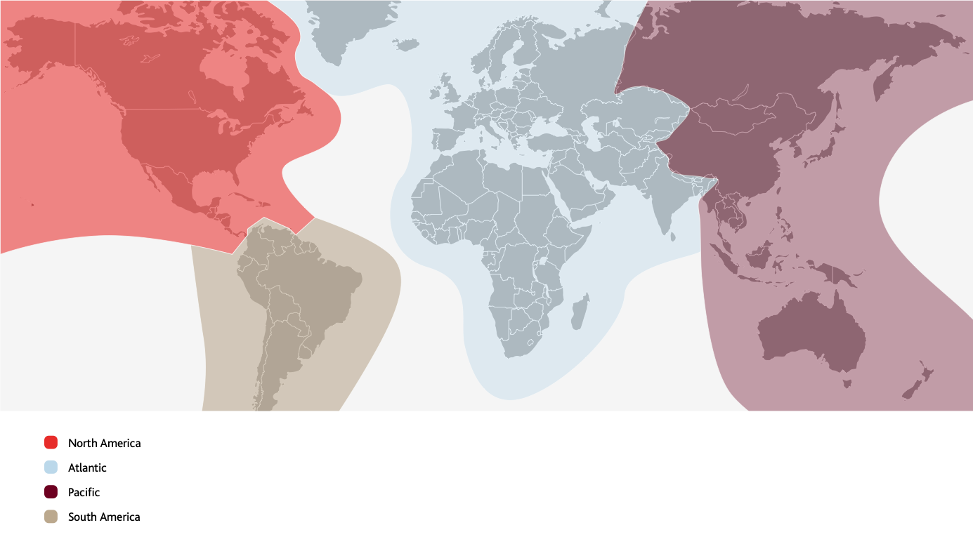
This results in there being 10 separate award charts for travel within each zone and between each possible combination of zones:
- Within North America zone
- Between North America and Atlantic zones
- Between North America and Pacific zones
- Between North America and South America
- Within Atlantic zone
- Within Pacific zone
- Within South America zone
- Between Atlantic and Pacific zones
- Between Atlantic and South America zones
- Between Pacific and South America zones
Within each chart, you’ll see a breakdown of the one-way mileage requirements for Aeroplan redemptions, which depend on the distance flown, the operating airline, and the class of service. For round-trip pricing, simply double the amount required.
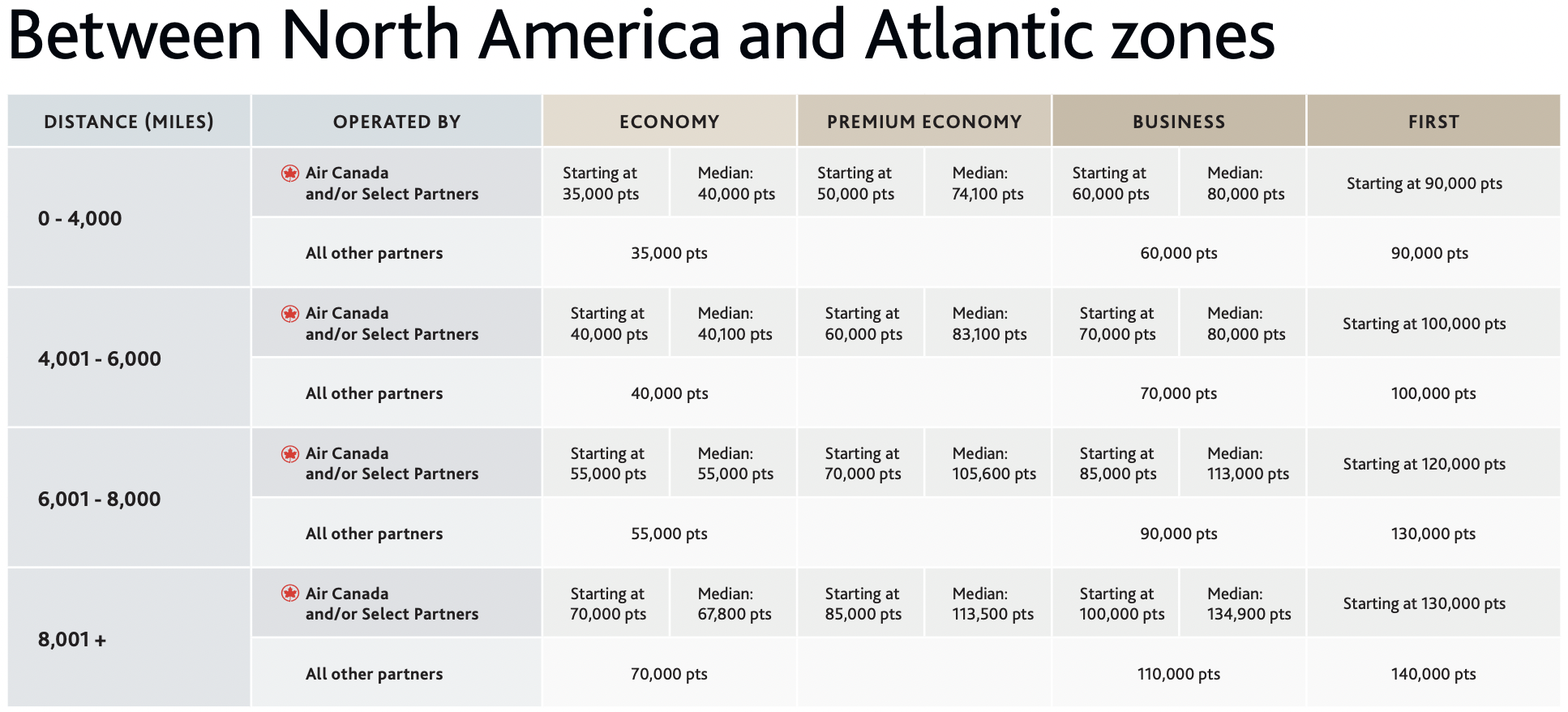
Understanding the Difference between Fixed and Dynamic Pricing of Aeroplan Redemptions
It’s important to note that for Aeroplan redemptions for Air Canada flights, as well as for flights with Select Partners (Emirates, flydubai, Etihad Airways, United Airlines, Canadian North, Calm Air, and PAL Airlines), Aeroplan employs dynamic pricing, which means that the price you find for a redemption will vary.
The other part of the row shows a single value for “All other partners”. If there’s an award seat available, you’ll pay that exact amount for the distance and class of service every time.
Indeed, understanding the distinction between dynamic pricing (on Air Canada and Select Partner flights) and fixed pricing (on all other partner airlines) is a key component of maximizing Aeroplan.
To illustrate this, let’s examine the below chart, which shows the “Within North America zone” section of the Flight Reward Chart.

Here, notice that each distance row is split into two rows of pricing: one for Air Canada and/or Select Partners, and one for “All other partners” (which includes other Star Alliance-member airlines, and all other non-alliance partner airlines).
In the Air Canada and/or Select Partners row, you’ll also find “Starting at” and “Median” values for each class of service. The “Starting at” values are the lowest prices you can expect to find, while the “Median” values are a more realistic example of what you’ll actually pay.
As a general rule, if you can get an Air Canada or Select Partners flight at the “Starting at” value or for around the same cost as what’s listed for “All other partners”, you know you’re getting a good deal.
On the other hand, if the pricing for an Air Canada or Select Partner flight is well above what’s listed for “All other partners”, your best bet is to look for partner airlines or get creative with your routing (see the Advanced Aeroplan Tactics section for more on this), so as to avoid paying more than you should.
For example, let’s suppose you’d like to fly from Montreal to London, and you set your sights on business class.
Upon consulting the “Between North America and Atlantic zones” section of the Flight Reward Chart, you take note that flights with Air Canada and/or Select Partners have “Starting at” prices at 60,000 points and Median prices at 80,000 points. Flights with “All other partners” show 60,000 points, too.
A quick search on the Air Canada website brings up the following results for non-stop flights, which show pricing above the listed “Starting at” and “Median” values for business class. You may also find lower prices in business class on other dates.

While the pricing in economy and premium economy is good, you decide to scan through the search results to see if there are any other options.
As it turns out, you notice that by adding a connection in Ottawa, you can get to London in business class for just over 60,000 points, which is a great deal.

Upon scanning through the results a bit more, you also notice an option to fly from Montreal to London via Munich with Lufthansa (a Star Alliance-member airline), which prices out at 70,000 points in business class. (Flying via Munich pushes the distance to over 4,000 miles, which means that you’re in the second distance band on the “Between North America and Atlantic zones” chart.)
This option shows as Lufthansa has released award availability to Aeroplan for this particular date and flight; however, you won’t see it as an option if there isn’t award availability released to Aeroplan.

It goes to show that knowing the Flight Reward Chart and scanning through the search results with target redemption goals in mind can help you score a deal. While you’d have to add a connection to get to your destination for less (in this example), doing so would save you a tidy amount of points, and you’d also be strategically navigating dynamic pricing.
How to Price Out Aeroplan Redemptions
As mentioned above, knowing how to price out Aeroplan redemptions is important if you want to maximize your points.
In order to price out an Aeroplan redemption, you should first determine the correct zones based on your origin and destination, and then head over to Great Circle Mapper to determine the distance between your origin and destination cities.
For example, a Toronto–Vancouver domestic flight clocks in at 2,085 miles in distance.
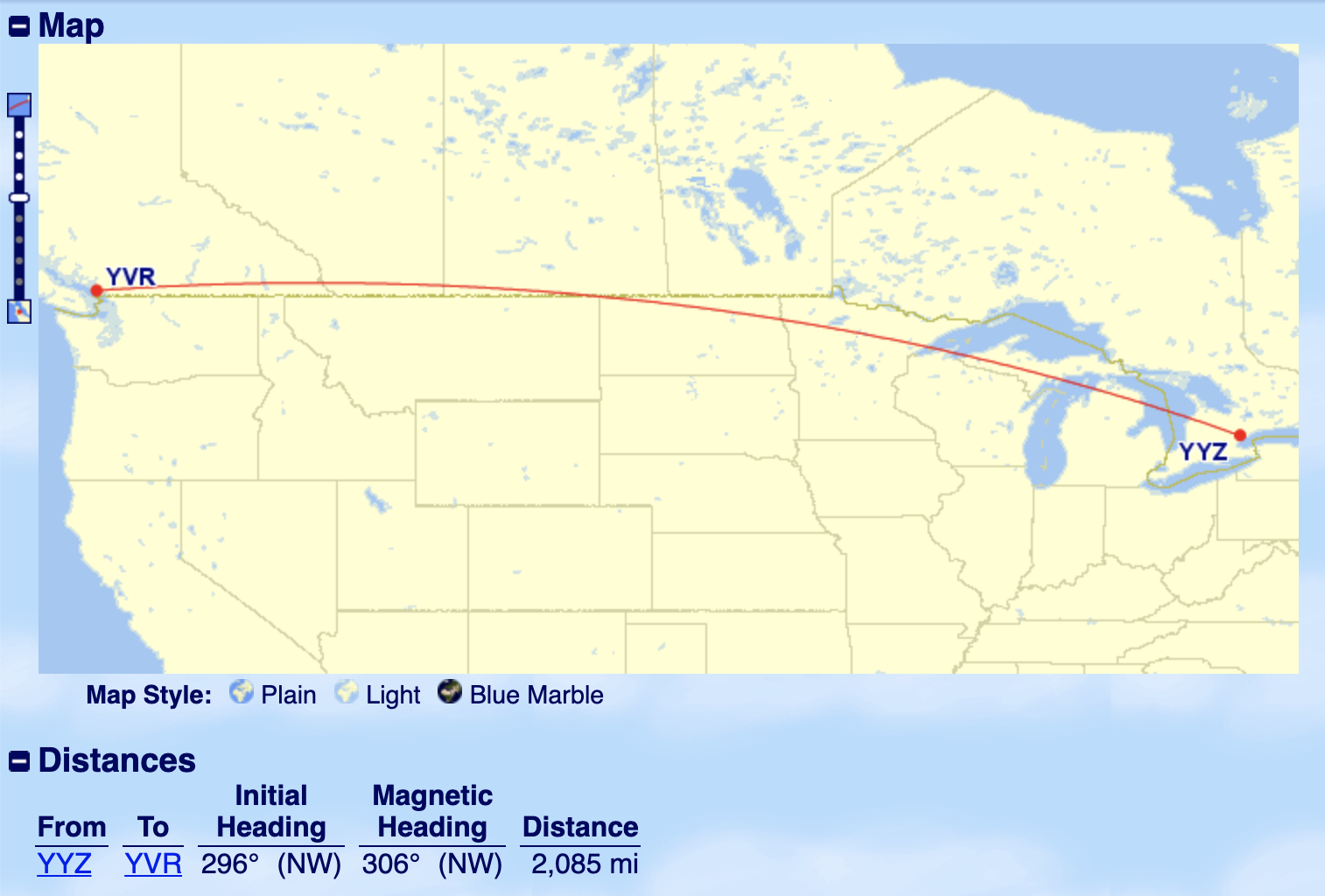
Next, you’ll want to reference the “Within North America” section of the Flight Reward Chart, since this particular itinerary has flights with an origin and destination in North America.
Since the distance between the two cities is roughly 2,085 miles, we’d reference the values listed in the distance band of “1,501–2,750 miles”, and note the following values for one-way flights:
- Economy: Starting at 12,500 points, with a median value of 15,800 points
- Premium economy: Starting at 20,000 points, with a median value of 30,300 points
- Business class: Starting at 25,000 points, with a median value of 40,800 points
Again, when you go to search for flights on this route, use the aforementioned values as references. If you’re flexible with your departure time and date, you should be able to find flights close to the “Starting at” values; however, it’s worth noting that this is going to be more difficult with flights in premium economy and business class than it is with economy.
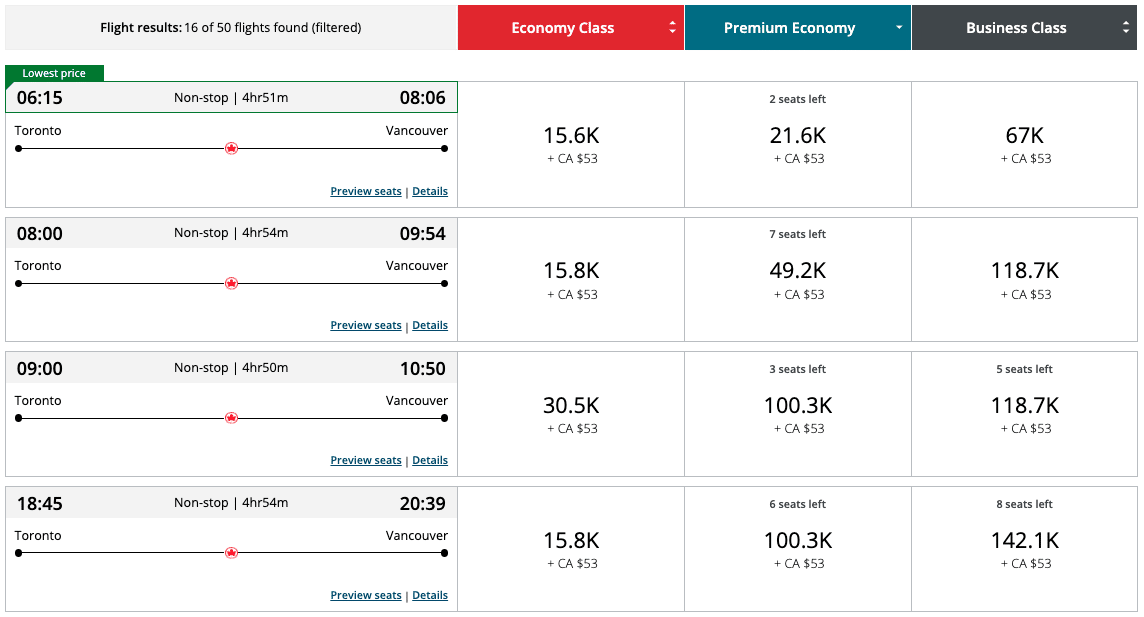
(Keep in mind the pricing may also go below or above this range due to dynamic pricing, and if you have a co-branded credit card, then you’ll enjoy discounts on the pricing thanks to the preferred pricing feature. More on this in the Aeroplan Features section of this guide)
Choosing a Fare Type for Aeroplan Redemptions
Any time you book an Aeroplan reward flight, you have the ability to select one of three different fare categories (Standard, Flex, or Latitude) in economy class, or one of two different fare categories (Lowest or Flexible) in premium economy, business class, or First Class.
You’ll see these options after you select a class of service in the search results.
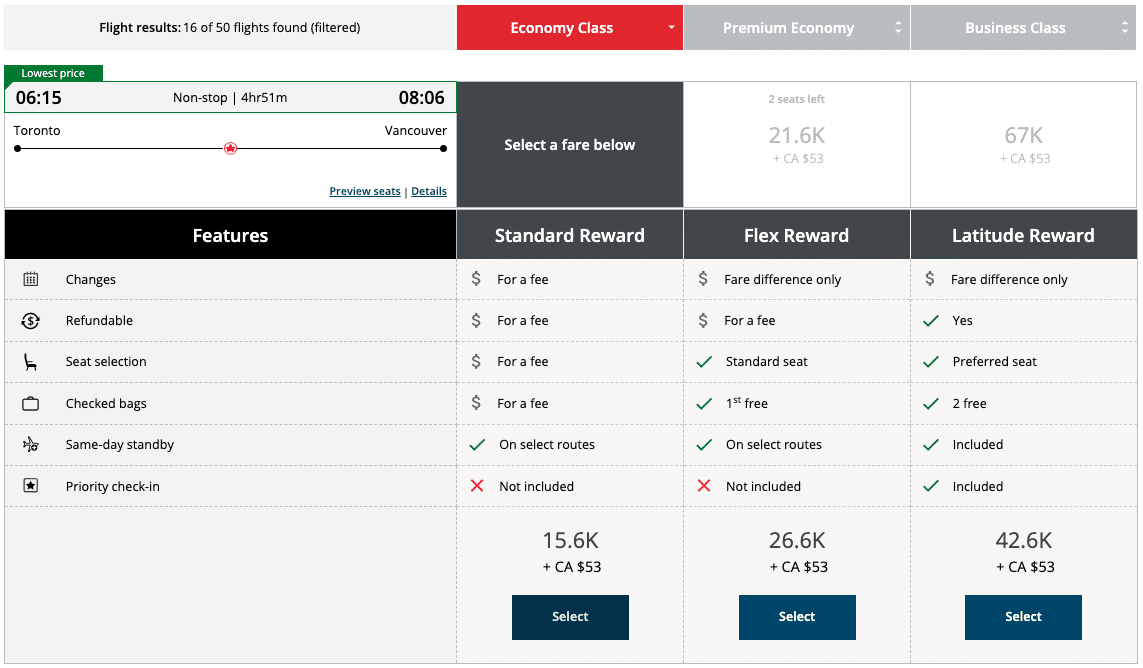
Within each class of service, the higher fare categories typically command a premium of Aeroplan points per direction, and come with added benefits such as a waiver of change and cancellation fees, complimentary Preferred seat selection, complimentary checked bags, prioritized eUpgrade clearance, and more.
You’ll want to familiarize yourself with the inclusions and exclusions at each fare level to make sure you’re choosing the best fare for your goals. You can consult our extensive guide to choosing Air Canada fares for detailed information on the different fare types.
Here are some general considerations to keep in mind for choosing between fare types on Aeroplan redemptions. Note that some only pertain to members with Aeroplan Elite Status.
- Economy (Standard): you’ll pay the lowest amount of Aeroplan points, but you’ll have to pay to change or cancel your booking
- Economy (Flex): if you need to change your flight, you’ll only pay the difference in Aeroplan points (if any). This is a good fare to use to take advantage of last-minute award availability.
- Economy (Latitude): you’ll pay the most amount of points, but you can cancel your booking for free. Also a good option for “The Latitude Attitude”.
- Premium Economy (Lowest): great for eUpgrade waitlist ranking considerations, but you’ll have to pay to change or cancel your booking.
- Premium Economy (Flexible): also great for eUpgrade waitlist ranking, but you won’t pay to cancel your booking.
- Business Class (Lowest): the lowest price for business class Aeroplan redemptions and comes with standard lounge access before your flight (amongst other inclusions), but you’ll have to pay a cancellation fee if your plans change
- Business Class (Flexible): access to the Air Canada Signature Suite in Toronto or Vancouver (on eligible flight departures only), but it’ll cost more than the Business Class (Lowest) fare
Aeroplan’s Points + Cash Feature
After choosing your desired flight, class of service, and fare category, you’ll be given the choice to pay for your Aeroplan award in one of four different ways under the Points + Cash feature.

Here’s a breakdown of the four options:
- Regular number of Aeroplan points + regular cash component
- All Aeroplan points + $0 in cash
- 80% of the regular number of Aeroplan points + 20% of the points component converted to cash + regular cash component
- 60% of the regular number of Aeroplan points + 40% of the points component converted to cash + regular cash component
You can pay the default number of points along with the standard amount of taxes and fees. This option is second from the right, and the amount of points will match the figure shown in the search results when you selected your fare.
You can also choose to pay for the whole trip with Aeroplan points, which means you’re essentially redeeming additional points to avoid paying the taxes and fees. This option is marked by the “Points Only” wording underneath the value.
If you choose this option, it’s worth noting that you’ll get a value of 1 cent per Aeroplan points against the taxes and fees. While this results in a truly free flight, it’s also lower than our target valuation of Aeroplan points (2.1 cents per point).
For the other two options, you can choose to redeem 80% of the regular number of points (which is typically marked by “Popular”), or 60% of the regular amount of points (typically the option on the far left), and have the remaining amount of points converted to a cash component.
If you choose either of these options, Aeroplan essentially lets you “buy back” 20% or 40% of your points at an effective rate of 1.995 cents per point (cpp). Since it’s generally pretty feasible to unlock a higher redemption value than 1.995cpp, it can sometimes be a good idea to take advantage of this end of the Points + Cash spectrum and save your points for future high-value uses instead, especially if you’re short by a few points for a redemption.
Finally, remember that you won’t have to pay fuel surcharges under the Aeroplan program, regardless of the chosen airline. However, you’ll pay a $39 partner booking fee for any ticket that contains at least one flight on a partner airline, and there’s also a $30 phone booking fee for any ticket booked over the phone.
Aeroplan is an excellent loyalty program, and there’s plenty of information to learn.
If you’d like to fast track your understanding of the program, consider joining the Prince of Travel Community. There, you can connect with a group of likeminded peers, and you’ll also have access to exclusive Aeroplan-specific content.
Plus, you can also consider our Points Coaching services, which pair you with an expert to provide personalized information on how to optimize your earning and redeeming of Aeroplan points and more.
Redeeming Aeroplan Points for Hotel Stays
Aside from using points to book flights, Aeroplan members can also redeem them for hotel redemptions.
In some cases, you can get outsized value for your hotel redemptions, especially by timing your redemption during a promotion, leveraging the Fourth Night Free benefit for Aeroplan credit cardholders, and redeeming for a HotelSavers hotel.
Other Ways to Redeem Aeroplan Points
In addition to flights and hotel stays, you can redeem Aeroplan points for car rentals, vacation packages with Air Canada Vacations, activities & travel experiences, merchandise, gift cards, bid upgrades, Wi-Fi, LCBO purchases, and more.
It’s worth reiterating you’ll get much more value from your Aeroplan points if you redeem them for flights instead of anything else, and that’s what we’d recommend you do.
However, it’s worth noting that Aeroplan allows you to do a lot more with your points than just fly, and there’s something to be said for that.
Aeroplan Redemption Sweet Spots
With our overview of earning and redeeming Aeroplan points complete, let’s now talk about some of the best sweet spots for redeeming your Aeroplan points.
What Are the Best-Value Flights that You Can Book with Aeroplan Points?
Generally speaking, business class and First Class flights to international destinations usually offer the best value redemptions. That’s because the cash value of these flights is typically very high, and you get the most outsized value from your points this way.
Aeroplan is partnered with some of the best airlines in the world, and you can use your Aeroplan points to book some of the best premium cabins out there.
For example, you can book Singapore Airlines business class, ANA First Class, Lufthansa First Class, EVA Air business class, Thai Airways First Class, and so much more using Aeroplan points. Not only will you have an excellent flight experience, but you’ll be certain that you’re getting excellent value for your points.
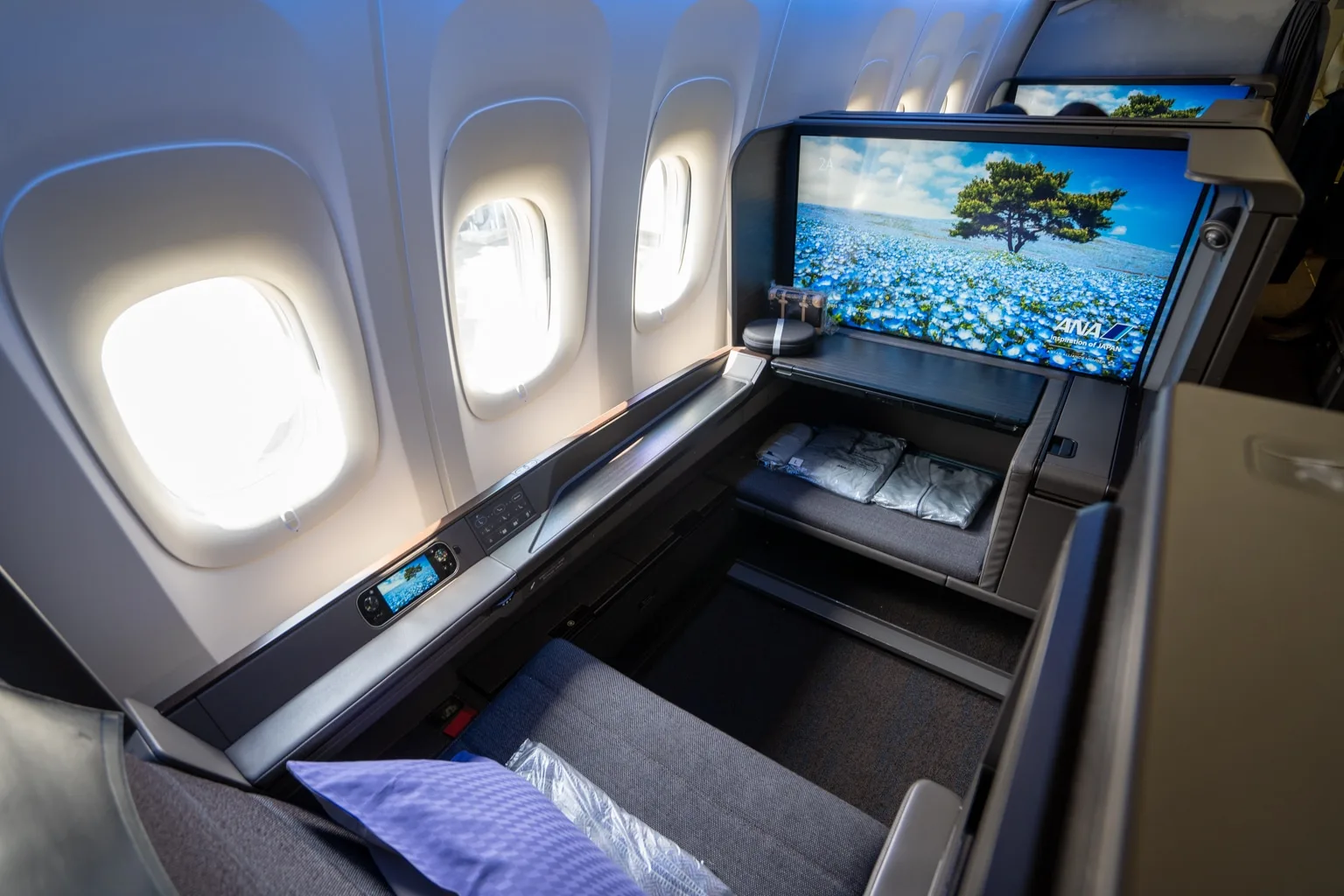
However, that’s not to say that redemptions in economy class can never be good value.
Using points for last-minute economy tickets, for example, could be extremely valuable since cash fares are likely sky-high. This is especially the case with most Aeroplan partner airlines, since award pricing is fixed and predictable.
Plus, some people simply don’t care for luxury travel, preferring to use their points to take more trips in coach instead.
And if you’ve ever wanted to visit destinations in Northern Canada, such as Churchill, Iqaluit, or Yellowknife, you can get excellent redemption value for flights with Canadian North, Calm Air, and PAL Airlines.
Aeroplan Sweet Spots
Because the Aeroplan program uses zonal and distance-based charts, the best sweet spots will vary depending on where in Canada or the United States you’re originating from.
If you’re based on the West Coast, then one of the best sweet spots is flying to Tokyo or Osaka for as few as 35,000 Aeroplan points in economy class or 55,000 Aeroplan points in business class. You can also fly from Vancouver to Tahiti via San Francisco for as few as 35,000 points in economy or 55,000 points in business class.
Due to the geographical proximity to Asia, redemptions under the “Between North America and Pacific zones”chart tend to be more favourable than going to Europe.
On the other hand, if you’re based in Toronto or Montreal, then the redemption rates to Europe would be relatively more favourable than going to Asia.
For example, 60,000 Aeroplan points (or often fewer, thanks to Air Canada’s preferred pricing if you hold a co-branded credit card) would unlock a transatlantic flight to most parts of Western Europe in business class.
No matter where in Canada you originate from, the “7,501–11,000 miles” distance band on the “Between North America and Pacific zones” chart is a very interesting sweet spot, because it lets you fly a relatively very long distance for only 87,500 Aeroplan points in business class. Indeed, it’s one of the best distance-to-price ratios of the entire chart, and 11,000 miles is often enough to route through Europe or the Middle East on your way to Asia!
There are also sweet spots closer to home: short-haul flights within North America that are under 500 miles only cost 6,000 Aeroplan points one-way.
Here is a Great Circle Mapper depiction of select major cities that are within 500 miles of Vancouver, Calgary, Toronto, Montreal, and Halifax. You’ll note that there are several places you could fly to within each band for only 6,000 points one-way.

Another very satisfying sweet spot is Hawaii being barely within 2,750 miles of Vancouver, falling just within the third distance band of the “Within North America” chart and flights costing as few as 12,500 Aeroplan points one-way in economy class at the “Starting at” prices listed on the Flight Reward Chart.
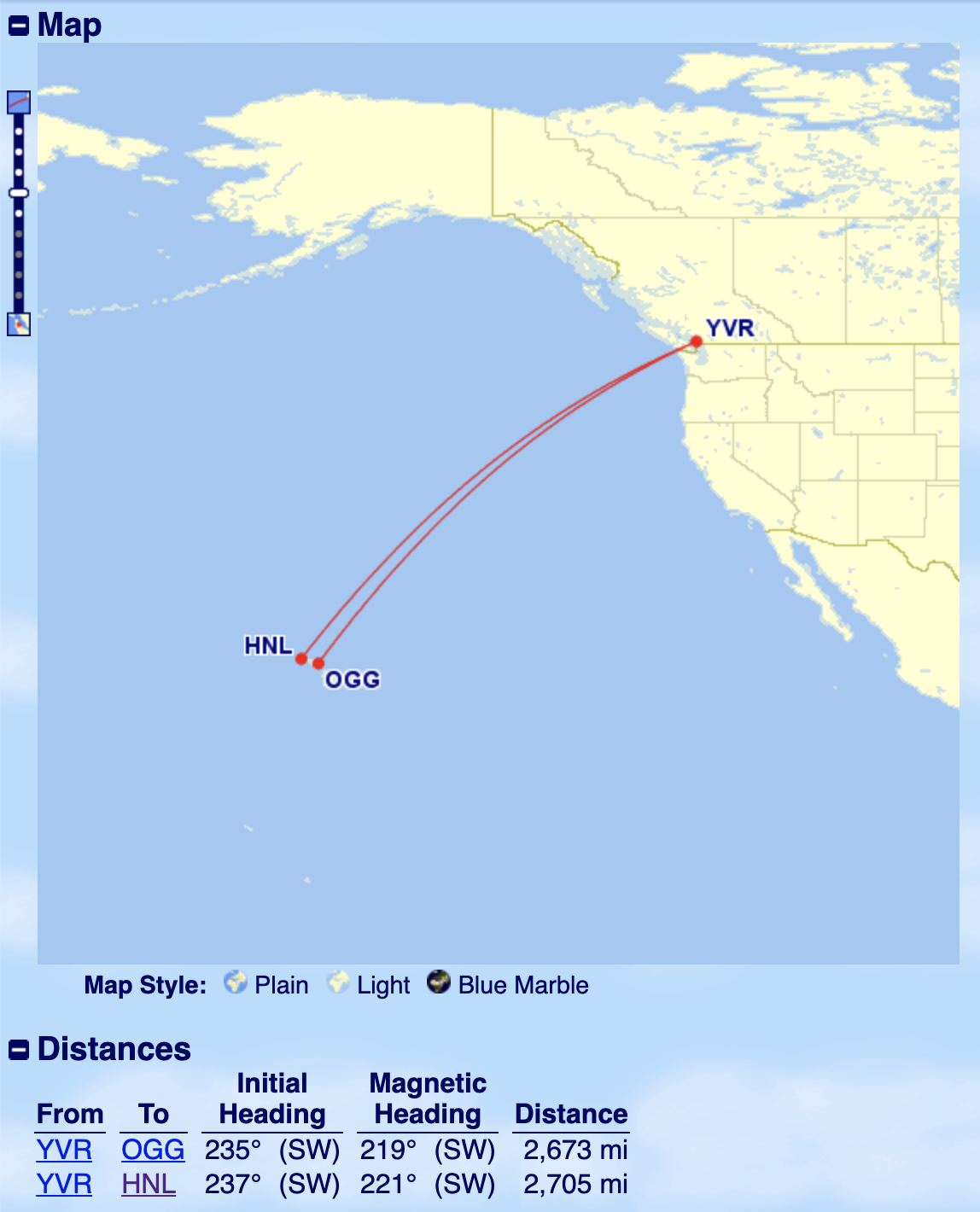
In summary, here’s a list of some of our favourite Aeroplan sweet spots and most favourable redemptions, keeping in mind that these are either subject to dynamic pricing (in which case the pricing could be higher), or subject to award flights being available in the first place (as is the case with partner airlines).
- Short-haul flights of fewer than 500 miles for 6,000 Aeroplan points in economy class (within North America with Air Canada or United Airlines)
- Flights of fewer than 1,500 miles (i.e., Toronto–Halifax, Vancouver–Los Angeles) for 10,000 Aeroplan points in economy class or 20,000 Aeroplan points in business class (with Air Canada or United Airlines)
- Major Canadians cities to Mexico for 12,500 Aeroplan points in economy class or 25,000 Aeroplan points in business class (with Air Canada or United Airlines)
- Central & Eastern Canadian cities to the Caribbean for 12,500 Aeroplan points in economy class or 25,000 Aeroplan points in business class (with Air Canada or United Airlines)
- Vancouver to Hawaii for 12,500 Aeroplan points in economy class or 25,000 Aeroplan points in business class (with Air Canada)
- Rest of Canada to Hawaii for 17,500 Aeroplan points in economy class or 35,000 Aeroplan points in business class (with Air Canada or United Airlines)
- Toronto or Montreal to Casablanca for 35,000 Aeroplan points in economy class or 60,000 Aeroplan points in business class (with TAP Air Portugal or Air Canada)
- Vancouver or Calgary to Tokyo or Osaka for 35,000 Aeroplan points in economy class or 55,000 Aeroplan points in business class (with ANA or Air Canada)
- Vancouver or Calgary to Auckland for 75,000 Aeroplan points in business class (with Air New Zealand, United Airlines, or Air Canada)
- Vancouver to Brisbane for 75,000 Aeroplan points in business class (with Air Canada or United Airlines)
- Central & Eastern Canadian cities to Peru for 50,000 Aeroplan points in business class (with Copa Airlines or Air Canada)
- Canada to the “Asia 3” distance band, potentially routing via Europe, for 87,500 Aeroplan points in business class (with a host of airlines)
If you’re interested in redeeming Aeroplan points for travel within any of the regions, be sure to check out our guide to short-haul sweet spots.
Aeroplan Features
Aeroplan has a few notable features that can add further ease and value to the earning and redeeming of points.
Aeroplan’s Family Sharing Feature
One standout feature of the Aeroplan program is Family Sharing, which allows up to eight family members to pool points together.
The household lead of each Family Sharing group has the power to invite members to the pool, as well as designate which members of the pool have the ability to redeem points out of the pool.
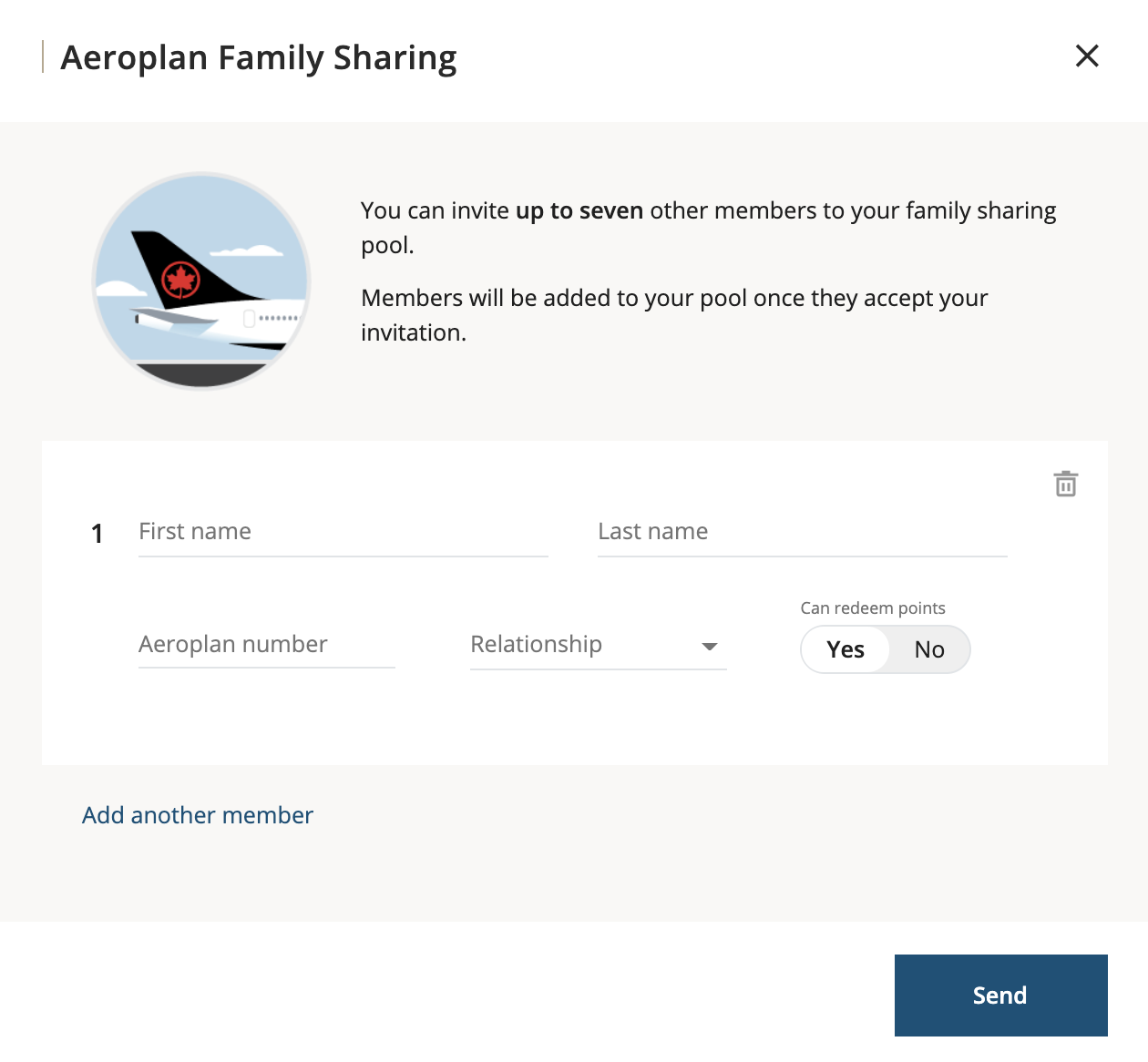
There are some rules to be aware of as it relates to joining and exiting a Family Sharing group:
- Once you’ve joined a Family Sharing group, you may not exit the group until three months later
- Once you’ve exited a Family Sharing group, you may not join another Family Sharing group until six months later
It’s also important to note that whenever a redemption is made out of the Family Sharing group, points are deducted from all family members’ accounts proportionally to their current points balances.
There are several benefits that come along with Family Sharing. Not only does it make things more convenient for families who are earning and redeeming points as a unit, but as long as one member of the Family Sharing group has a co-branded credit card, then that member’s preferred pricing benefits are extended to the whole family as well. More on that below.
Aeroplan’s Stopover Feature
One of the best ways to get more out of your Aeroplan points is to leverage the stopover feature, which allows you to add an additional stop on an international itinerary for just 5,000 points per person.
There are a few important rules that govern stopovers with Aeroplan:
- You can book a stopover on a one-way, round-trip, or multi-city booking with one stopover allowed per direction of travel.
- Stopovers cannot be booked in Canada or the United States
- Stopovers must be a minimum of 24 hours and a maximum of 45 days
- Stopovers can be booked online or via the Aeroplan Contact Centre
In other words, for just 5,000 more points, you can visit two cities on a one-way trip instead of just one. Or, you could extend this even further and visit three (or more) cities on a round-trip or multi-city itinerary (see the Advanced Aeroplan Tactics section below for how to book complex itineraries).
Heading to Europe? Why not use Aeroplan points to fly from Vancouver to Frankfurt with Lufthansa, stopover for up to 45 days, and then continue from Frankfurt to Nice. Adding a stopover would come with a price of just 5,000 points, plus any applicable taxes and fees.
Or, you could use Aeroplan points to fly from Toronto to Istanbul with Turkish Airlines, stopover for up to 45 days, and then continue onward to, say, Bangkok as your destination.
Then, on the way home, you could fly from Bangkok to Tokyo, stopover for up to 45 days, and then fly back to Toronto with Air Canada.
The opportunities here are endless, and it’s one of the Prince of Travel team’s favourite ways to maximize Aeroplan redemptions.
Preferred Pricing on Aeroplan Redemptions
If you’re the primary cardholder of an Aeroplan credit card, you’ll benefit from preferred pricing on Aeroplan redemptions.
What this means is that you’ll redeem fewer points for the same Air Canada flight than someone without an Aeroplan credit card would.
Plus, as we mentioned above, if any member of a Family Sharing group enjoys preferred pricing as a primary cardholder, that same benefit applies to all members of the group.
Based on our analyses of preferred pricing, you’ll tend to save more points on flights that are priced above the “Starting at” values, and premium cardholders should see lower prices than core or entry-level cardholders.
Advanced Aeroplan Tactics
Once you’re familiar with the basics of Aeroplan, your next step is to learn what’s possible with the way the program is structured.
Here are some of our favourite tips for maximizing Aeroplan to the fullest.
Leverage Stopover Rules
In addition to simple round-trip and one-way redemptions, one of the most valuable ways of squeezing every drop of value out of your points is by taking advantage of Aeroplan’s generous stopover rules, as described above.
As a reminder, a stopover is defined as a stop of more than 24 hours in duration on your way from origin to destination. A stopover can be added to a one-way journey for an incremental 5,000 Aeroplan points.
On round-trip awards, you can therefore have up to two stopovers – and thus visiting three places in total, the destination plus the two stopovers – for an incremental 10,000 Aeroplan points.
In addition to the stopovers, you can also add layovers (i.e., connections of less than 24 hours) to your itinerary, meaning you could visit five, eight, or even ten places all for the price of one.
You’d only be allowed to stay more than 24 hours in your chosen stopover(s) and destination cities, but you could in theory schedule 23-hour layovers in the rest, and get an absurd amount of sightseeing under your belt.
To illustrate, let’s take the following sample itinerary:
- Toronto–Lisbon (layover) on TAP Air Portugal
- Lisbon–Rome (stopover) on TAP Air Portugal
- Rome–Istanbul (layover) on Turkish Airlines
- Istanbul–Bangkok (destination) on Turkish Airlines
- Bangkok–Tokyo (stopover) on Thai Airways
- Tokyo–Chicago (layover) on ANA
- Chicago–Toronto on Air Canada

The outbound flights to Bangkok will comprise a single “one-way bound”, while the return flights would comprise a second “one-way bound”.
Both would be priced under the “Between North America and Pacific zones” chart, and since the respective total flown distances are 10,249 and 9,525 miles, both one-way bounds would cost 87,500 Aeroplan points each, with all flights in business class.
Add 10,000 Aeroplan points for the two stopovers, and we arrive at a total price of 185,000 Aeroplan points for the journey in total.
Essentially, for around 180,000–200,000 Aeroplan points, you’re allowed to visit three cities around the world on a round-trip award – which is one of the most valuable uses of your Aeroplan points, since it allows you to essentially take three trips in one.
There’s much more depth to the topic of complex trips like these – including how you can have up to 10+ destinations on the same ticket, and what exactly is meant by a “one-way bound” in the first place.
That’s beyond the scope of this guide, but we’ve written an in-depth article covering all the details, which you can consult below.
Advanced Aeroplan Redemption Calculations
Now, you might be wondering: What about when there’s a connection or a stopover along the way? How exactly is the distance calculated for Aeroplan redemptions? The answer is as follows:
- If the itinerary consists only of Air Canada flights, then the distance is calculated based on the direct distance between origin and destination.
- If the itinerary consists of a partner-operated flight, then the distance is calculated based on the total distance flown.
Thus, whenever you’re booking flights on a non-Air Canada partner, keep in mind that choosing convoluted routings might put you into the next distance band, thus costing more points.
We can look at an example to illustrate, such as a one-way flight between St. John’s, Newfoundland and Munich.
We use the “Between North America and Atlantic zones” chart. The direct distance between St. John’s and Munich is 2,902 miles, well below the 4,000-mile threshold of the first distance band.
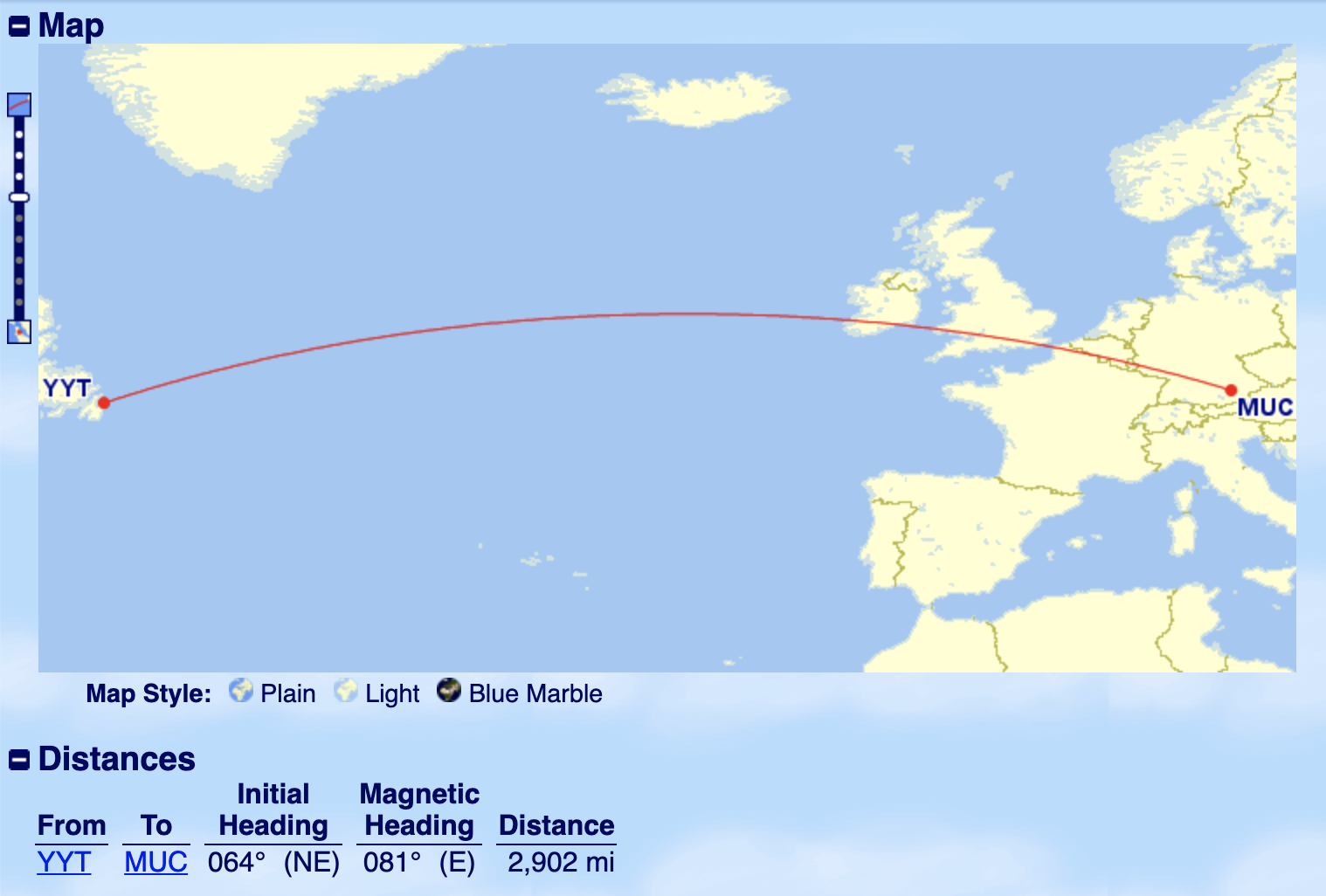
However, in practice, booking St. John’s–Munich generally requires backtracking to a hub airport, such as Montreal, in order to catch the transatlantic flight.
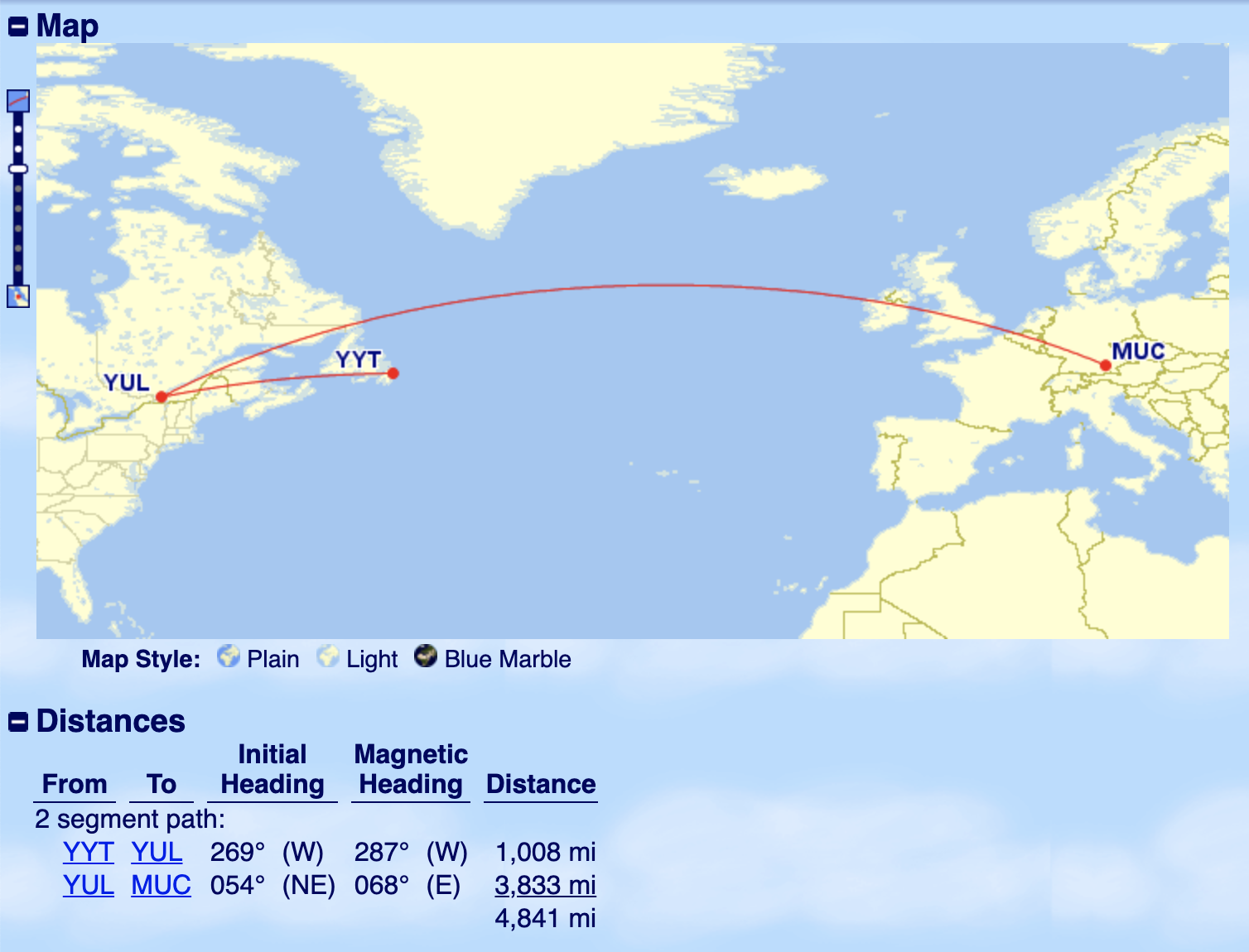
If this transatlantic flight is operated by Air Canada, then scenario #1 above applies.
The pricing is calculated based on the direct distance between St. John’s and Munich, so you’ll pay the dynamic Air Canada pricing for the first distance band of “0–4,000 miles”: Starting at 35,000 Aeroplan points in economy class, starting at 50,000 Aeroplan points in premium economy, or starting at 60,000 Aeroplan points in business class.
However, if the transatlantic flight is operated by Lufthansa, then scenario #2 above applies, since there is now a partner-operated flight on the ticket.
The pricing is calculated based on the total distance flown, so you’d pay the partner pricing for the second distance band of “4,001–6,000 miles”: 40,000 Aeroplan points in economy class or 70,000 Aeroplan points in business class (assuming that there’s no “weighted average” pricing going on, which we’ll discuss next).
Indeed, there’s one glaring question that you might ask based on the St. John’s–Munich example on a mix of Air Canada and Lufthansa: if Air Canada’s flights are dynamically priced, but partner flights are fixed, how does that price out on one itinerary?
The answer is that the price is a weighted average based on the respective distances flown on Air Canada and on partner airlines.
Aeroplan Elite Status
Air Canada’s elite status program known as Aeroplan Elite Status.
To qualify for Aeroplan Elite Status, members will need to earn the following qualification criteria during each calendar year:
- Status Qualifying Miles (SQM): Flight distance (in miles) flown with Air Canada
- Status Qualifying Segments (SQS): Flight segments flown with Air Canada
- Status Qualifying Dollars (SQD): Total spending (in Canadian dollars) on Air Canada flights, including base fares and carrier-imposed surcharges (and eUpgrade add-on fees), but excluding third-party taxes and fees
The exact qualification criteria for each elite tier is listed as follows:
To qualify for... | Members will need to earn... | In addition to... |
25K | 25,000 SQM or 25 SQS | $3,000 SQD |
35K | 35,000 SQM or 35 SQS | $4,000 SQD |
50K | 50,000 SQM or 50 SQS | $6,000 SQD |
75K | 75,000 SQM or 75 SQS | $9,000 SQD |
Super Elite | 100,000 SQM or 100 SQS | $20,000 SQD |
In addition to the above, it’s also possible for Aeroplan members to earn Aeroplan 25K status through Everyday Status Qualification: by earning 100,000 Aeroplan points via eligible sources (i.e., flying activity, eStore purchases, spending on Aeroplan co-branded credit cards, but excluding credit card signup bonuses and points transfers) during any calendar year.
In other words, you can earn status without flying by collecting 100,000 Aeroplan points over the course of a year.
Air Canada’s eUpgrades are a key component to the Aeroplan Elite Status program. The higher your status level, the more eUpgrades you earn, and you can use eUpgrade credits towards upgrading to a higher class of service on Air Canada flights.
You can use eUpgrades on Aeroplan redemptions, and this is one of the best ways to leverage your Elite Status benefits and Aeroplan points.
We’ve written extensively about how to maximize eUpgrades, and the best place to start is the below guide.
One of the most meaningful privileges of Aeroplan Elite Status is having access to Priority Rewards.
Priority Reward vouchers are distributed depending on how many Status Qualifying Dollars (SQD) you rack up each calendar year (with the first Priority Reward being granted upon reaching 4,000 SQD), and they offer an incredible 50% discount on the number of points required for any eligible flight redemption at the time of booking.
Depending on your status level, “eligible flight redemption” ranges from economy class flights within North America to business class flights worldwide:
- Aeroplan 25K Priority Rewards: Canada and US, economy class
- Aeroplan 35K Priority Rewards: North America, up to premium economy
- Aeroplan 50K Priority Rewards: North America, up to premium economy
- Aeroplan 75K Priority Rewards: Worldwide, up to premium economy
- Aeroplan Super Elite Priority Rewards: Worldwide, up to business class
Note that each Priority Reward voucher is only valid for one ticket for one passenger, so if you’re booking travel for multiple passengers, you’d need multiple Priority Reward vouchers.
Lastly, the Status Pass benefit allows Aeroplan 50K and higher elite members to bestow their elite privileges upon friends, family members, or anyone else, even if they aren’t travelling together.
If you’re an Air Canada frequent flyer looking to maximize the benefits of the Aeroplan Elite Status program, Aeroplan points, eUpgrades, and more without putting in all of the work yourself, head over to the Prince of Travel Concierge website to learn more about our white-glove service.
Our expert Concierge account managers will look after everything on your behalf: crafting a comprehensive credit card strategy, ensuring you’re earning elite status and leveraging all of the benefits, redeeming points for maximum value, and saving you time and money on booking travel.
Learn more about Prince of Travel Concierge, which offers frequent travellers, business owners, and founders a white-glove service for seamless travel.
Aeroplan Tips & Tricks
There are so many useful tips and tricks that you’ll pick up once you become familiar with the program. In no particular order, here are a few select ones:
Book early: Everyone is looking for the same award space, especially in high season and for redemptions in long-haul business class cabins. You’ll want to start searching for space as soon as possible to avoid disappointment.
Partner airlines typically release award seats to Aeroplan around 330 days prior to departure. Flights with Air Canada are available closer to one year in advance.
Or, book late: If you can’t find the award availability you’re looking for in advance, consider waiting until a month or less prior to departure. You’d be amazed at how plentiful award availability is at the last minute, and you can usually get what you want. Consider booking an Economy (Flex) fare as a backup option, and then once you find your preferred flight, make the change for just the additional cost in points (if any).
Free cancellation within 24 hours: If you make an Aeroplan redemption, be sure to check the details after you book. If anything looks amiss, you can cancel it for free within 24 hours of booking.
Schedule changes: If your itinerary gets altered as a result of an airline’s schedule change, you can request to be rebooked on alternative flights, and you won’t be hit with change fees or additional partner booking fees.
Latitude Attitude: If you have Aeroplan Elite Status, instead of booking an Air Canada business class flight directly, it can also be a great deal to book an Economy (Latitude) fare instead, and then use your eUpgrades to instantly confirm an upgrade into business class. This is what we’ve coined as The Latitude Attitude.
Stay below the threshold: You can maximize your points by concluding your trip just below the next-tier distance band. By staying under a threshold, you can save your points for other redemptions.
Consider separate bookings: Imagine booking Vancouver–Tokyo–Nagoya–Shenyang as one itinerary in business class, but the Nagoya–Shenyang segment is only available in economy class: this would cost 75,000 Aeroplan points. However, if you take advantage of the intra-Pacific chart and book the economy segment separately, it would cost a total of 63,000 points, providing a savings of 12,000 points!
If you’re building a multi-city or complex trip, be sure to compare various scenarios as doing so may wind up saving you points.
Conclusion
Aeroplan is one of the best loyalty programs around. Whether that’s because the program offers outstanding value for business class and First Class redemptions with more than 45 airlines, or because you can squeeze out value with economy flights, is something each member must decide for themselves.
We hope that this guide has shown you that Aeroplan is a program with which you get back what you put into it. If you dedicate a little bit of effort to navigating the initial learning curve, Aeroplan will allow you to reap massive rewards.







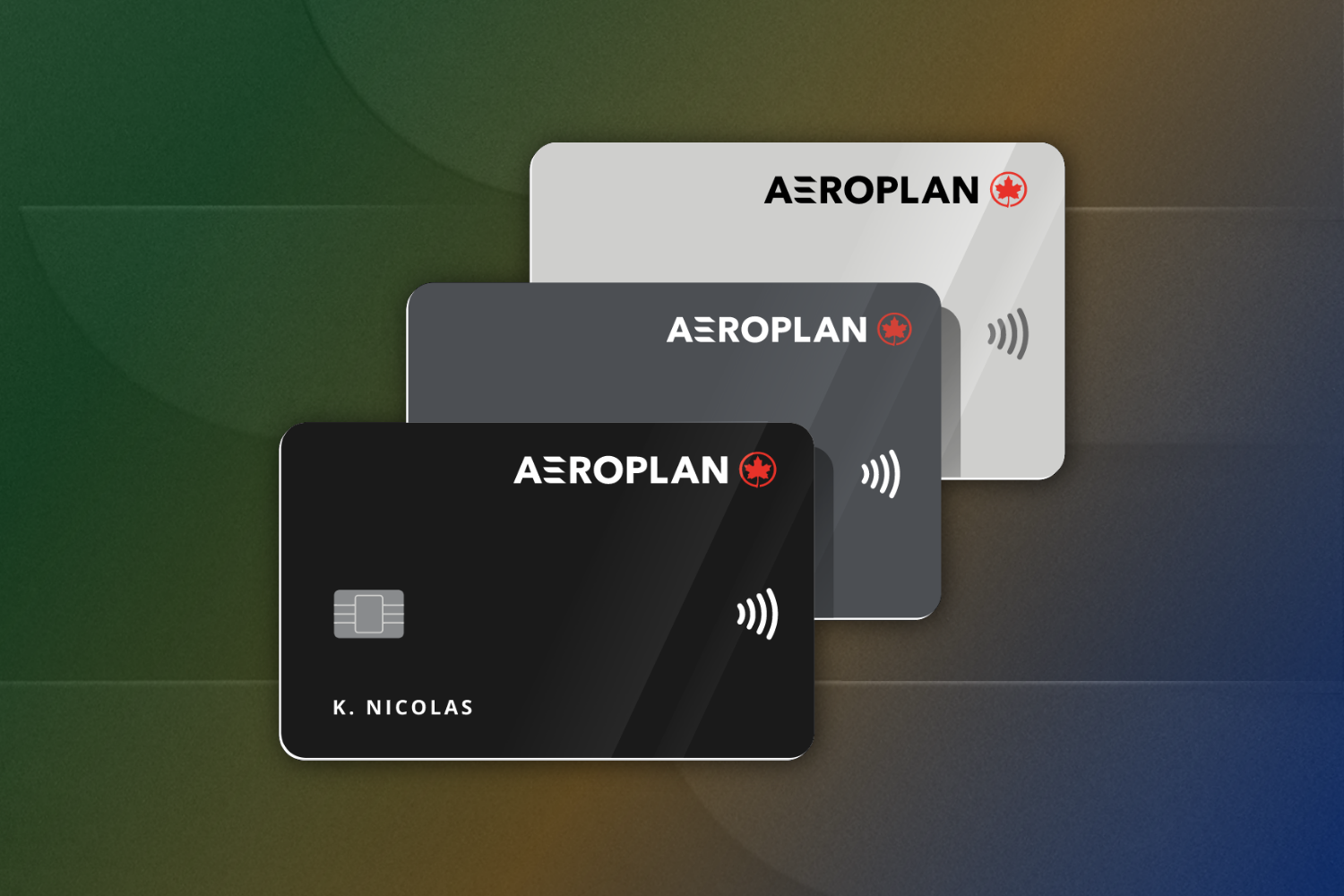
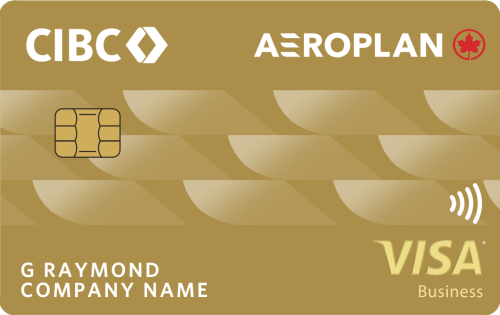

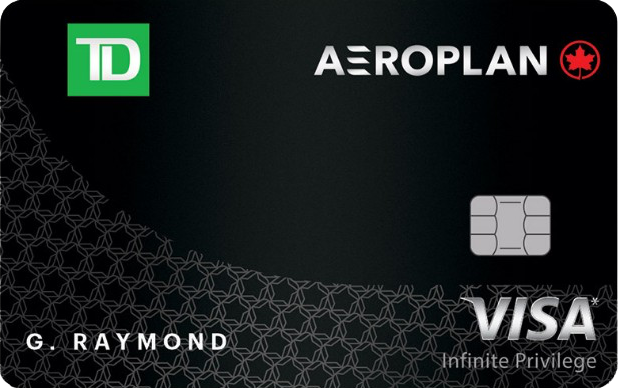

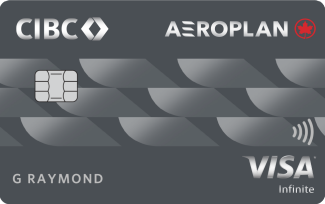
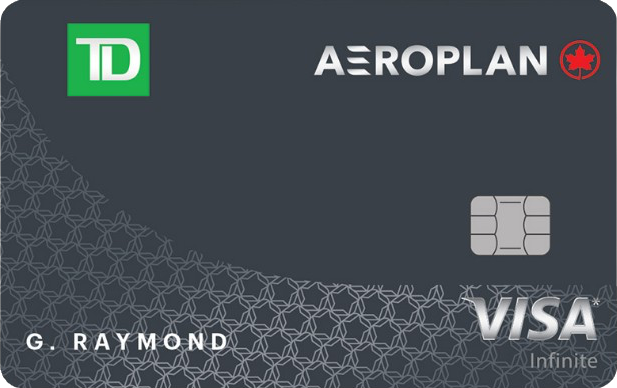

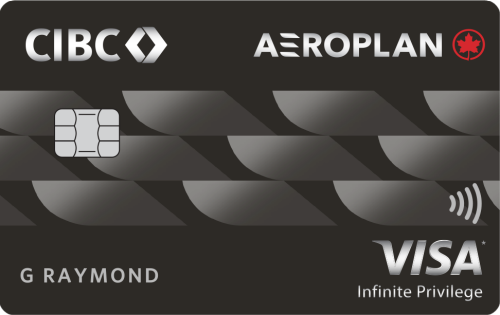
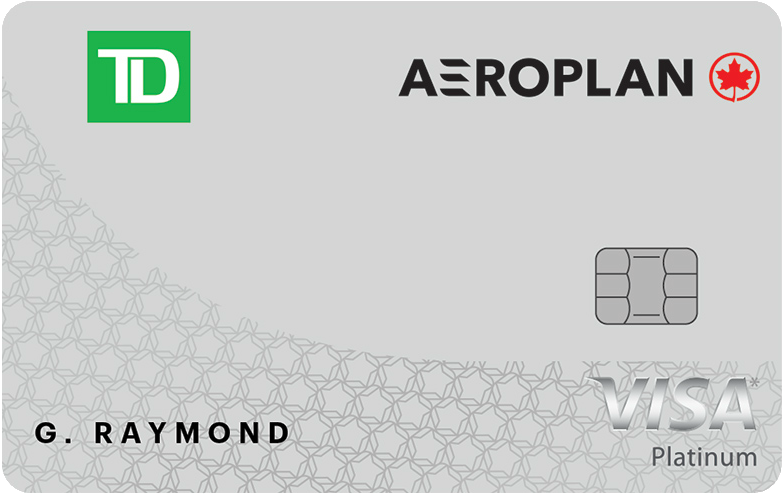






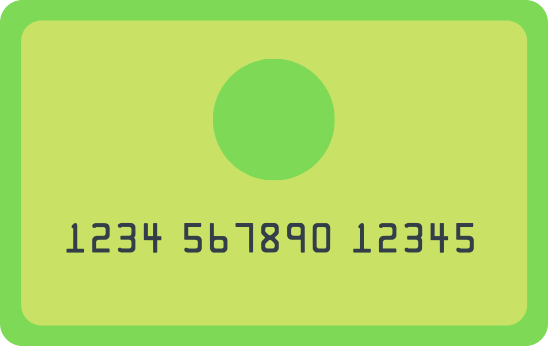

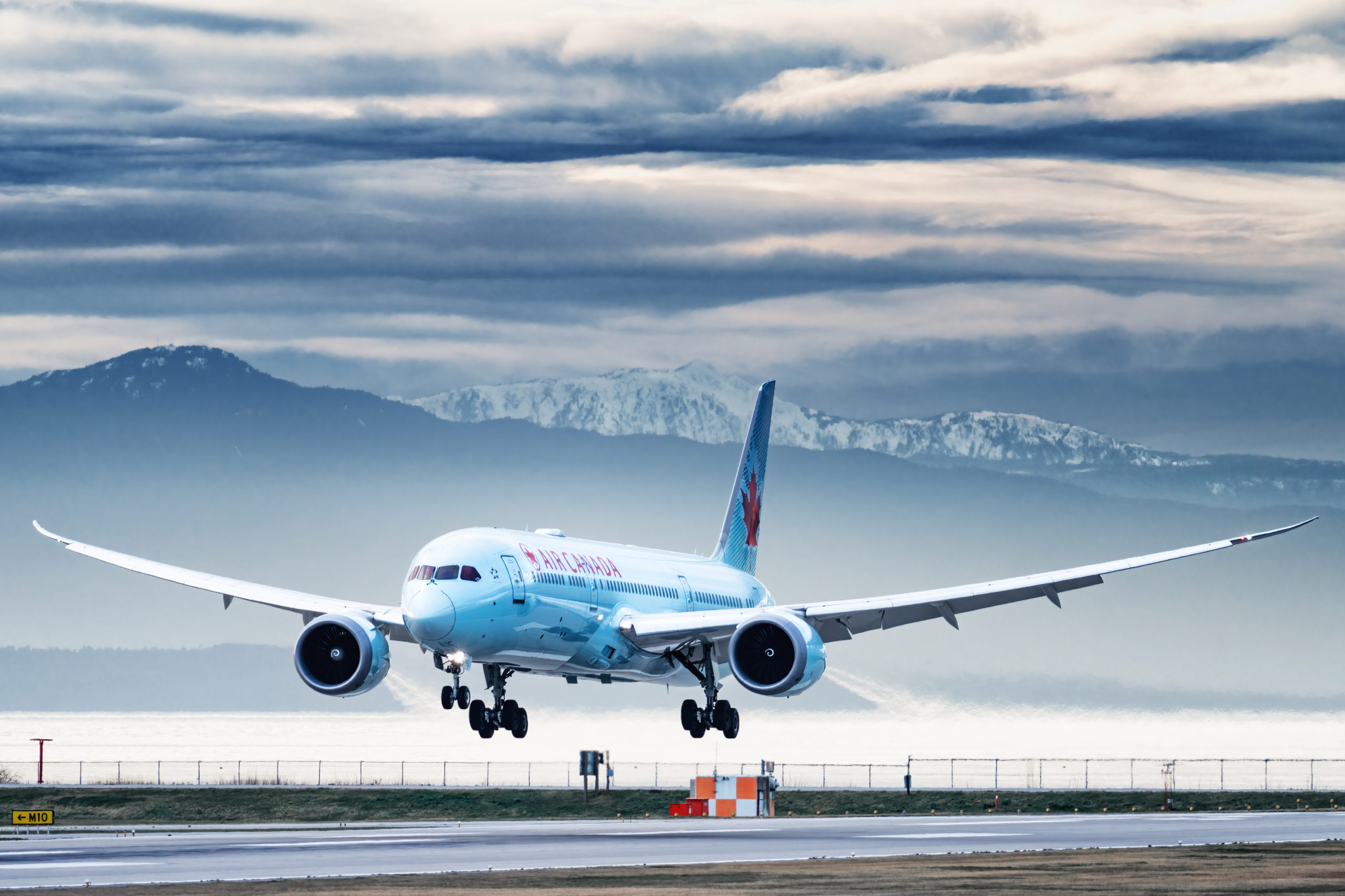
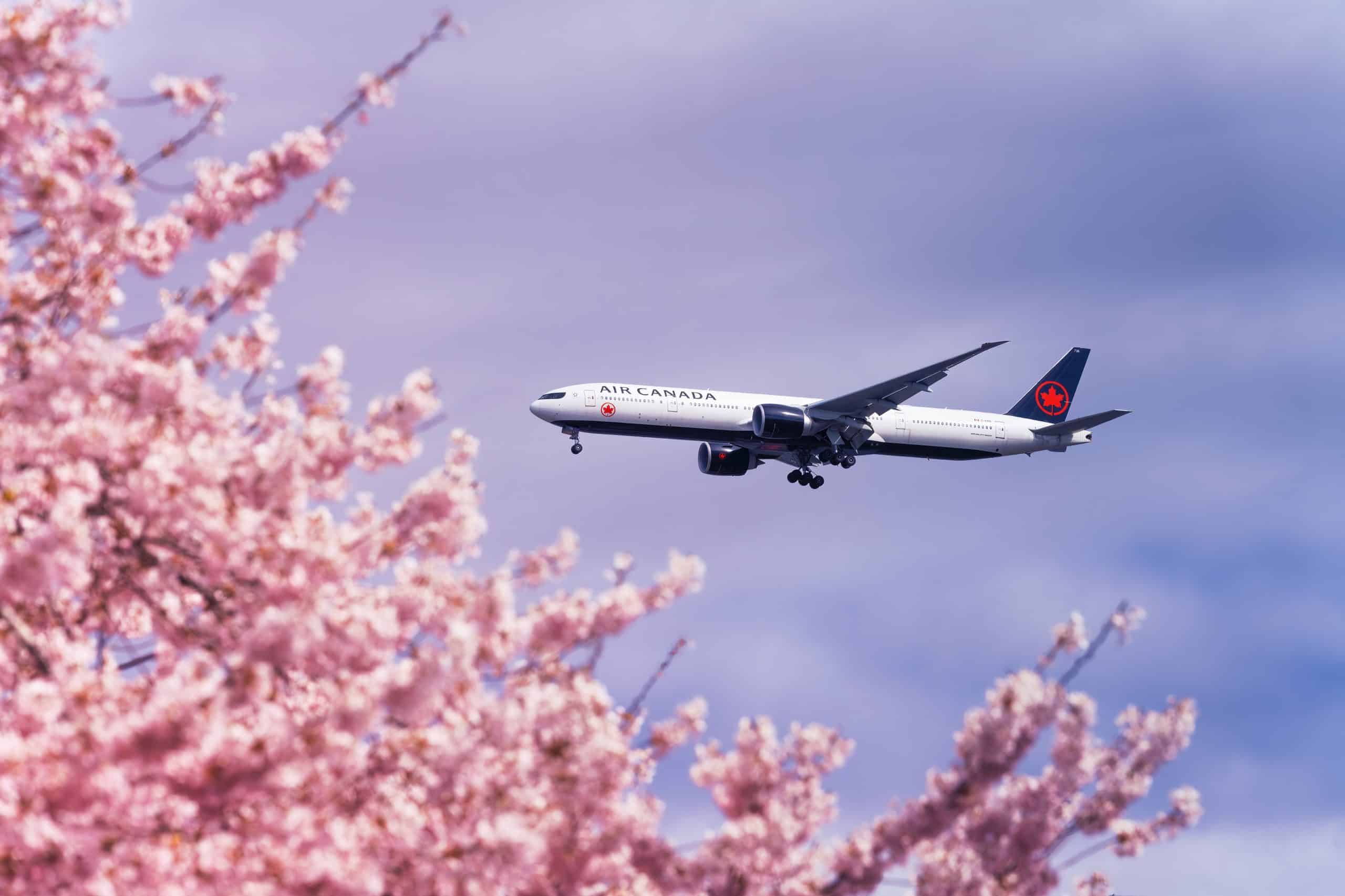





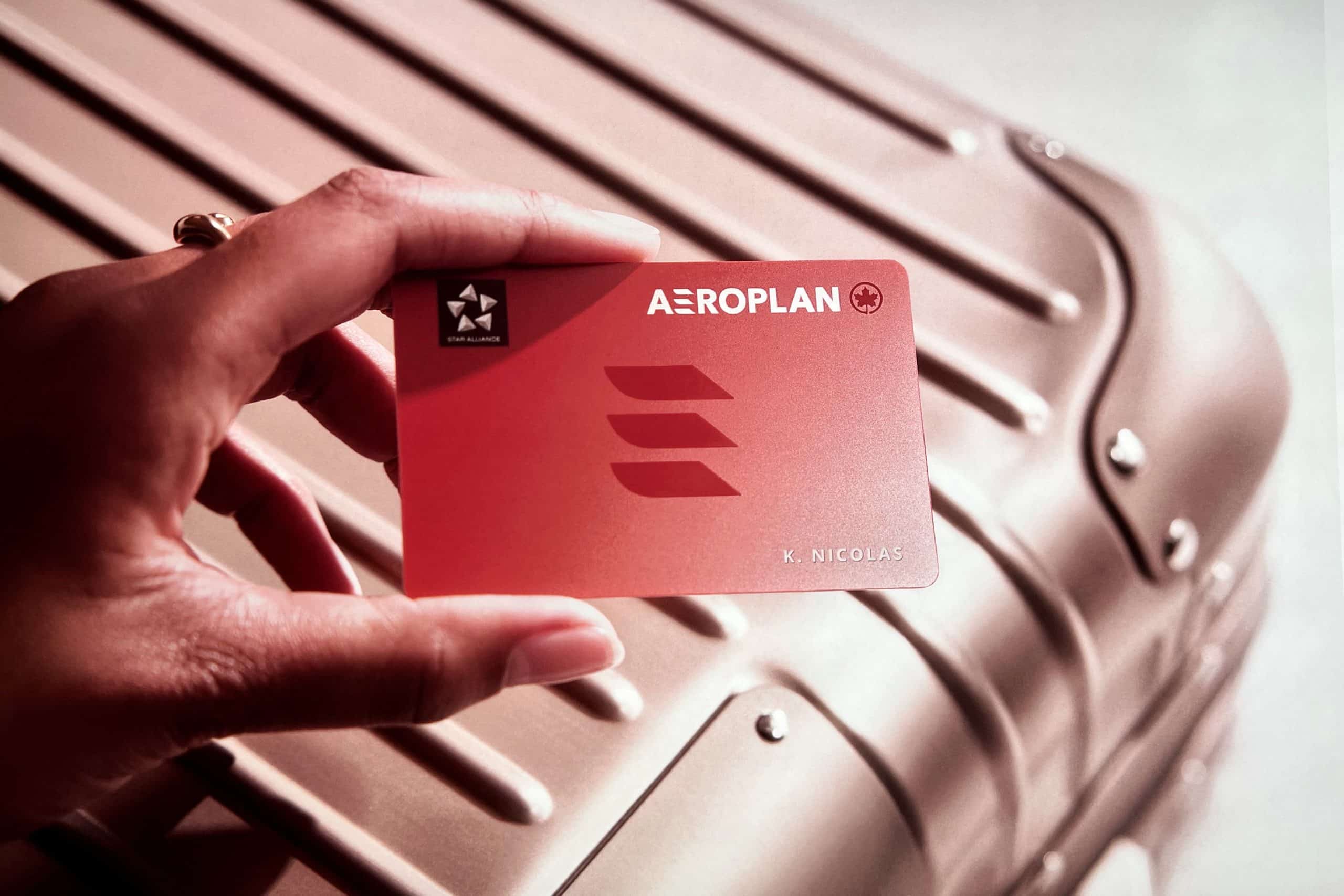

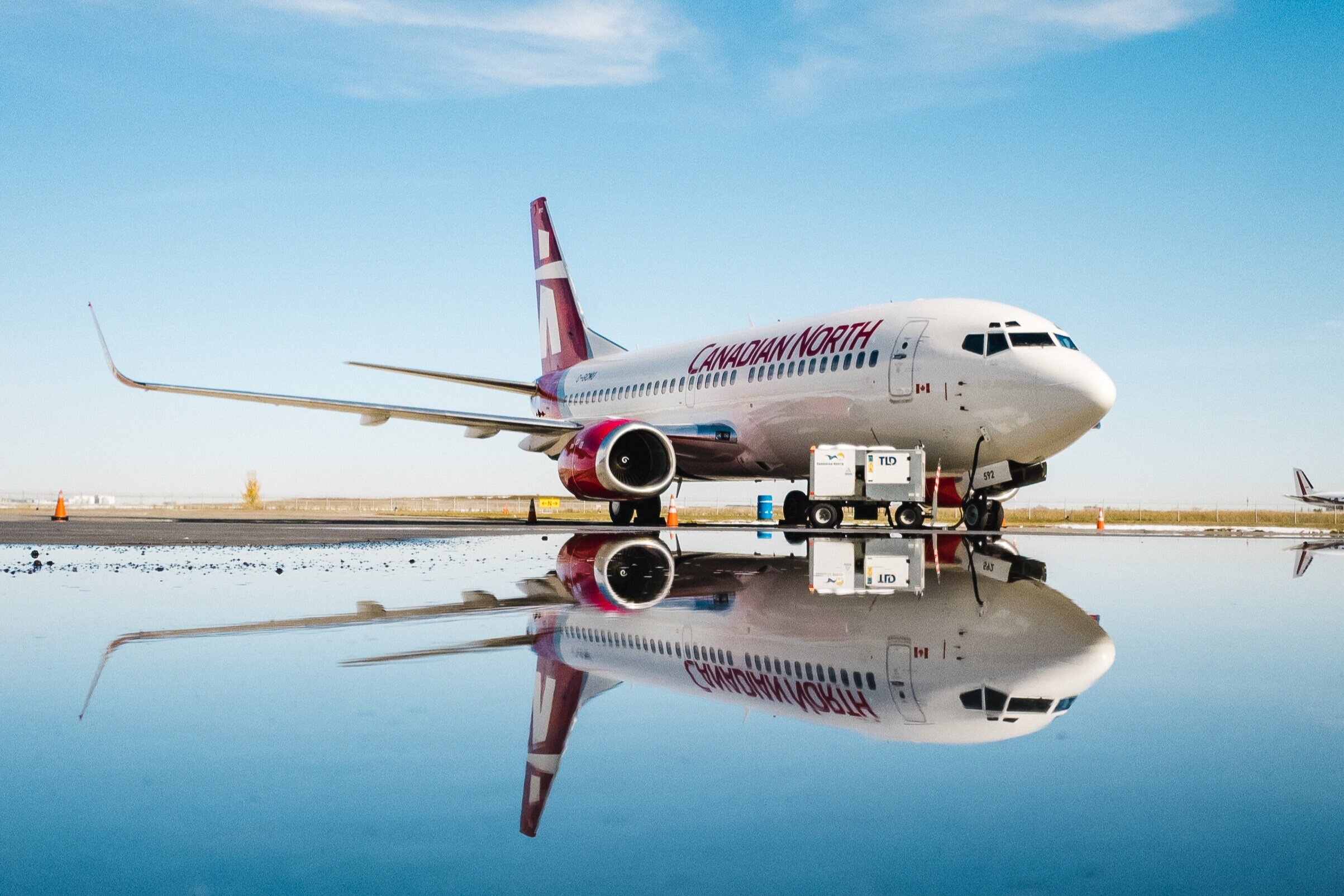
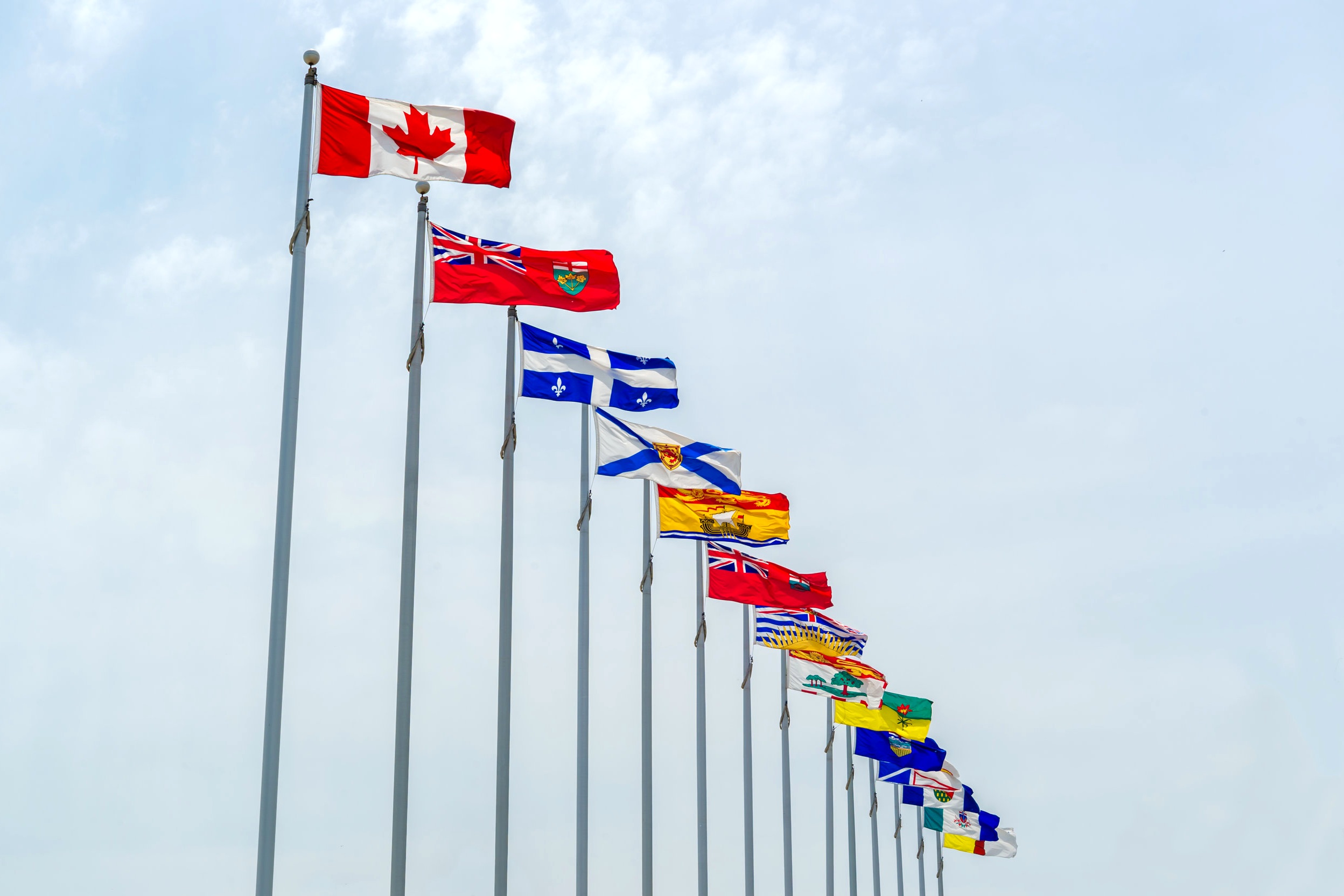
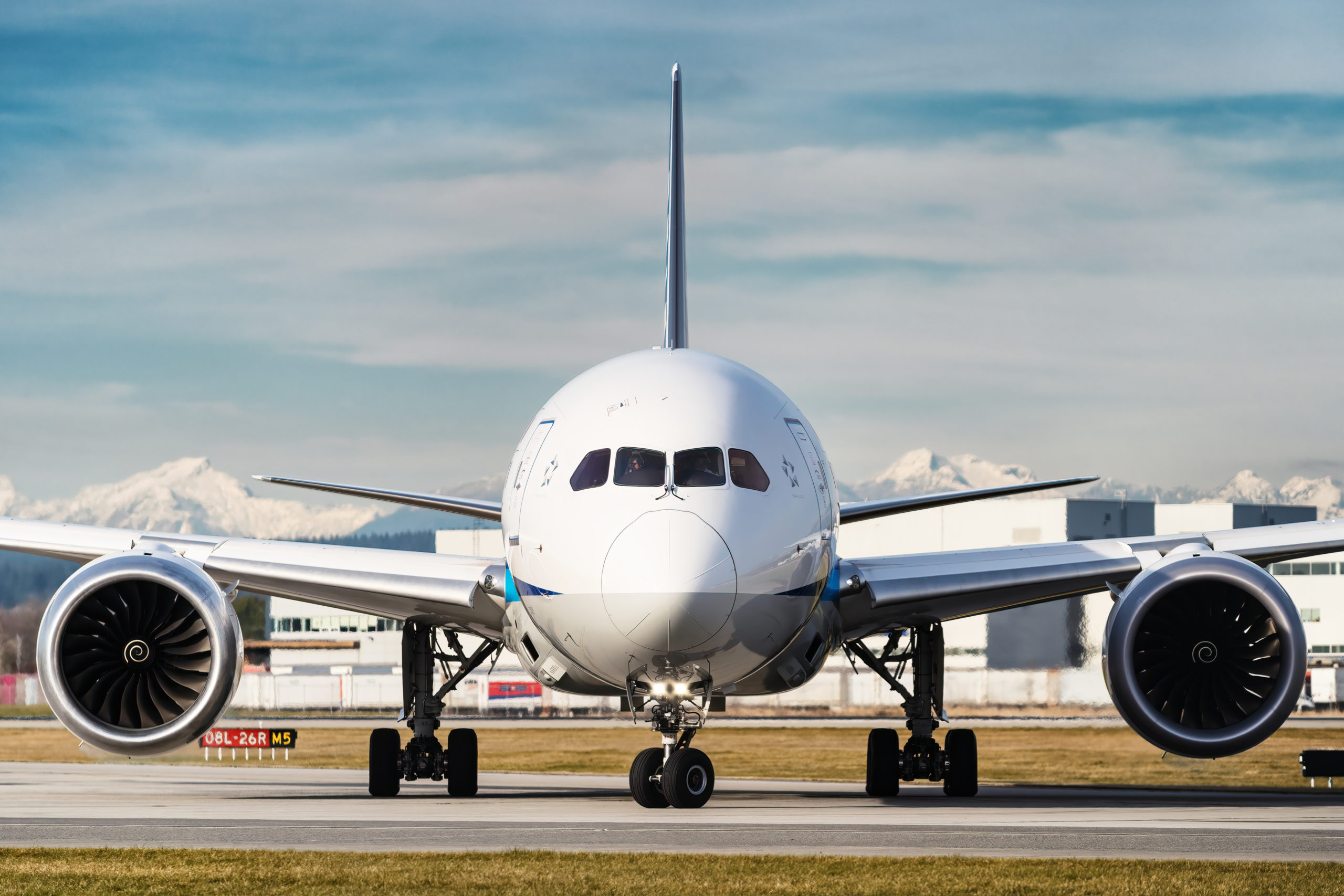
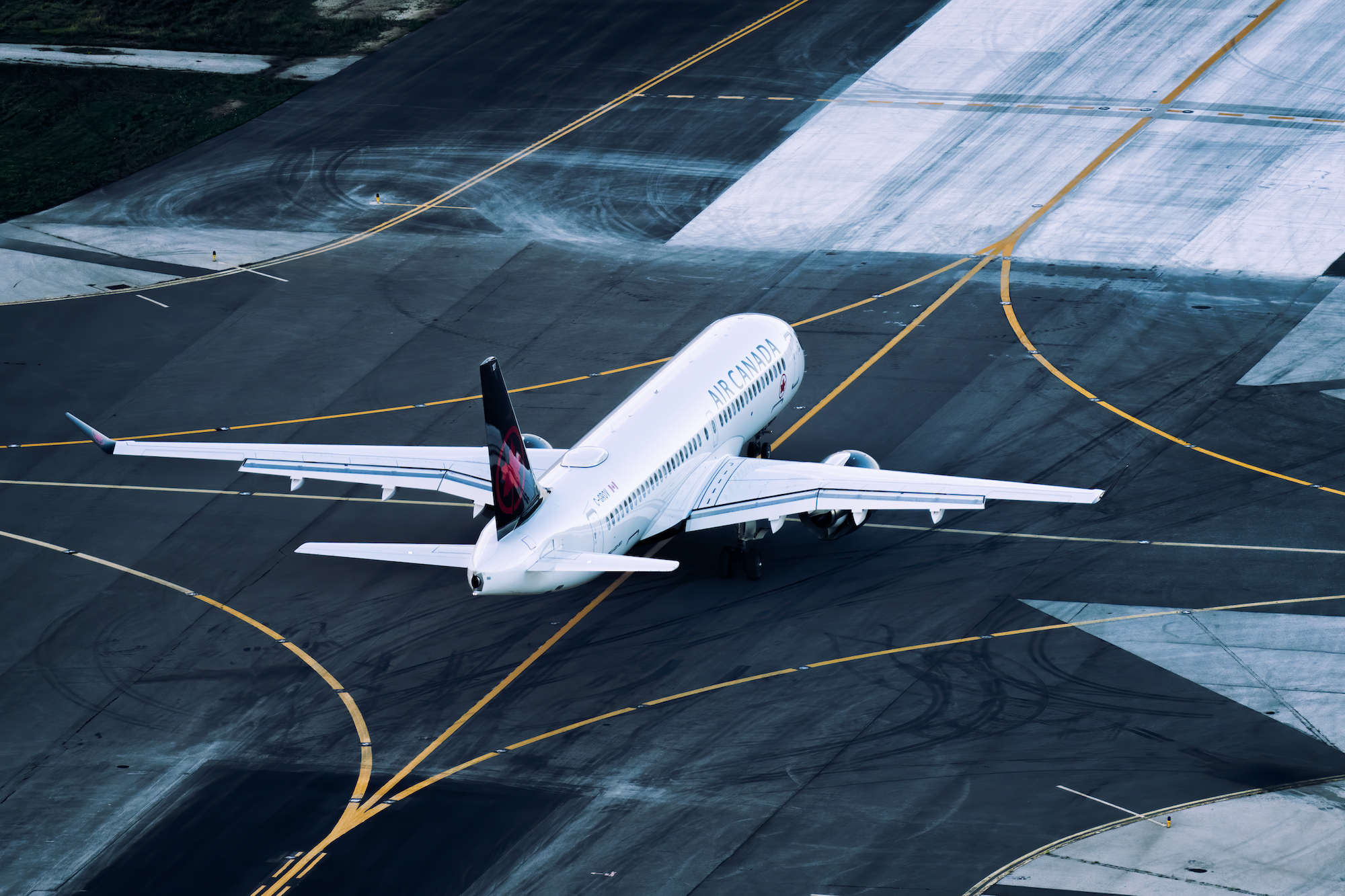
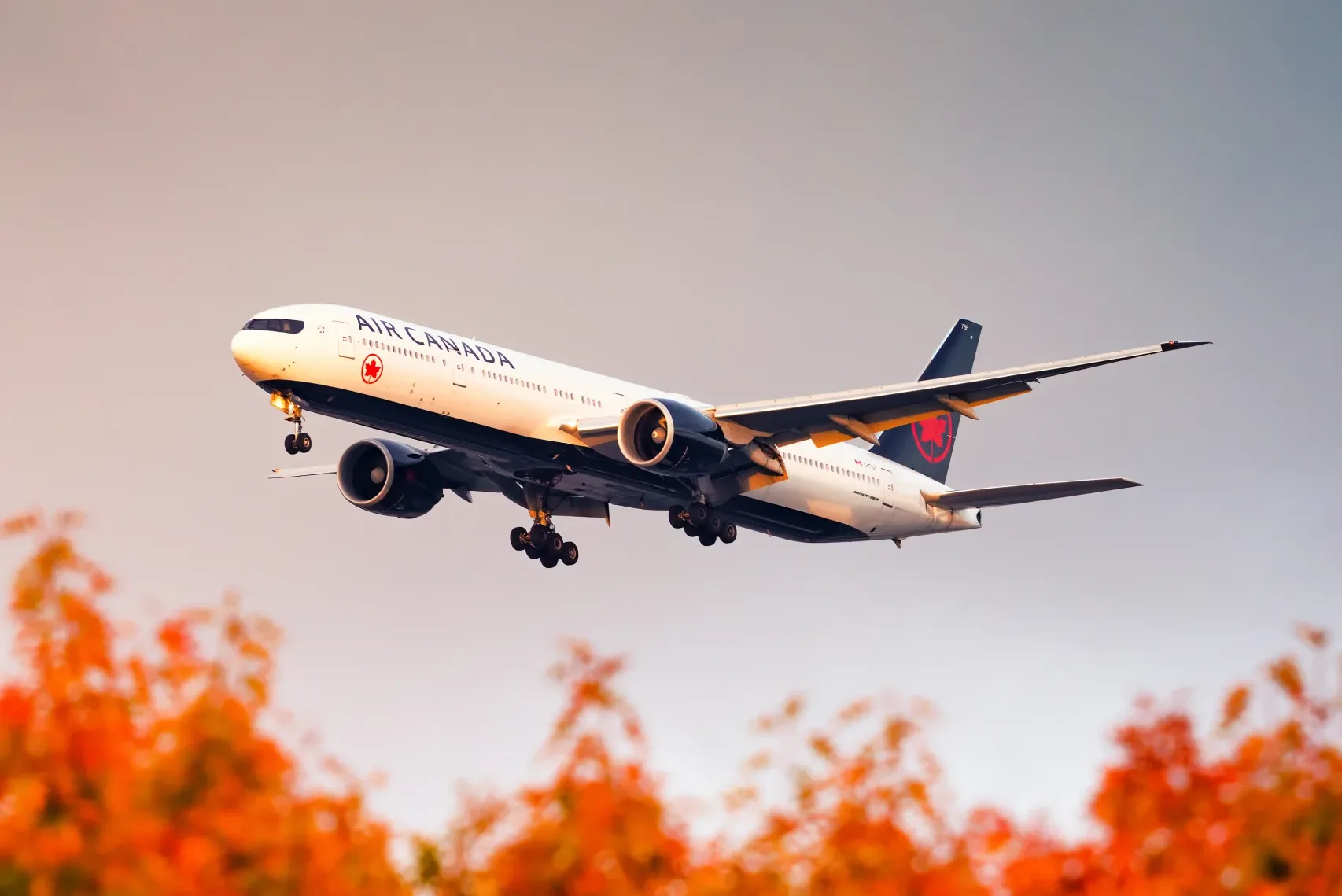
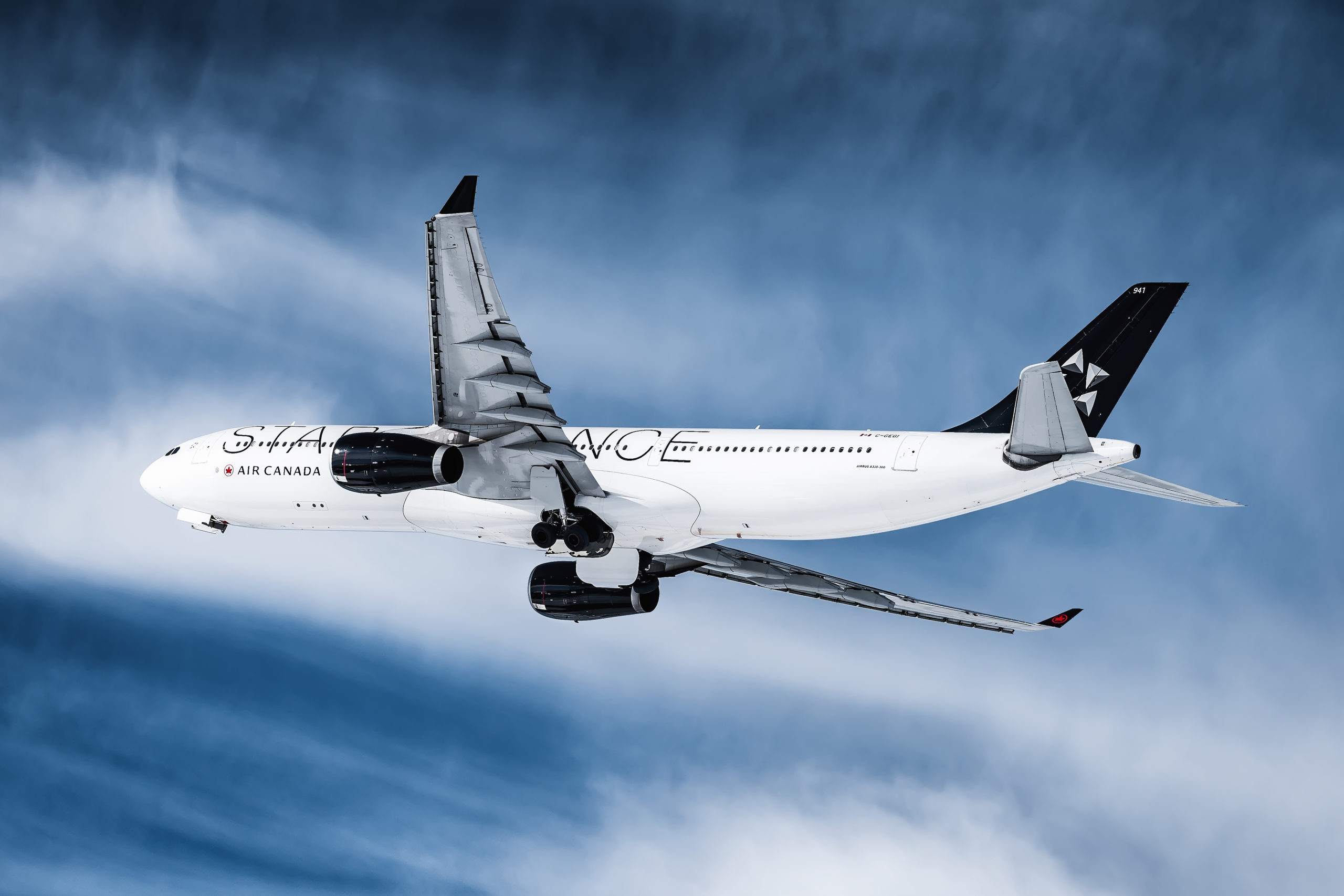
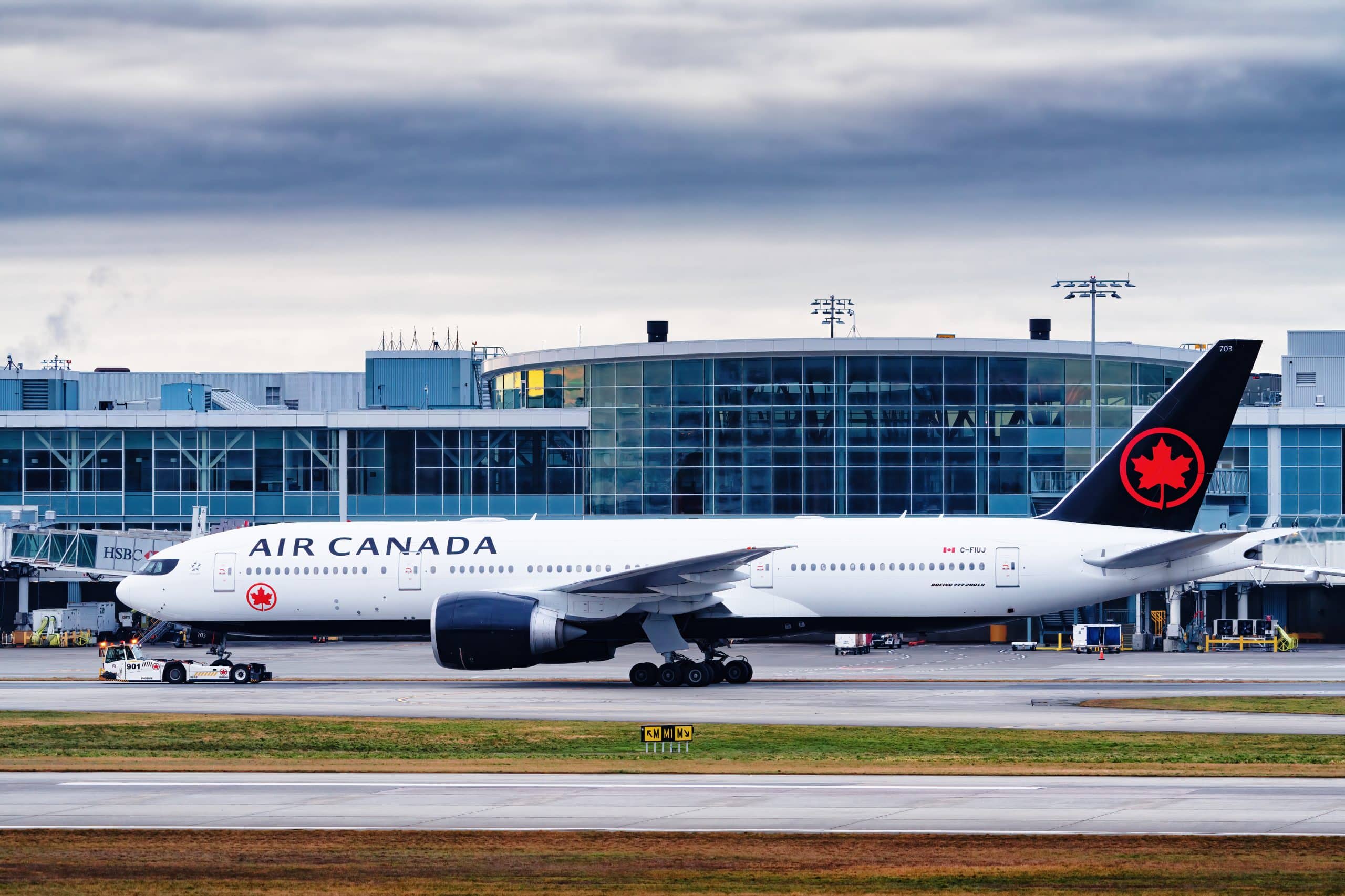

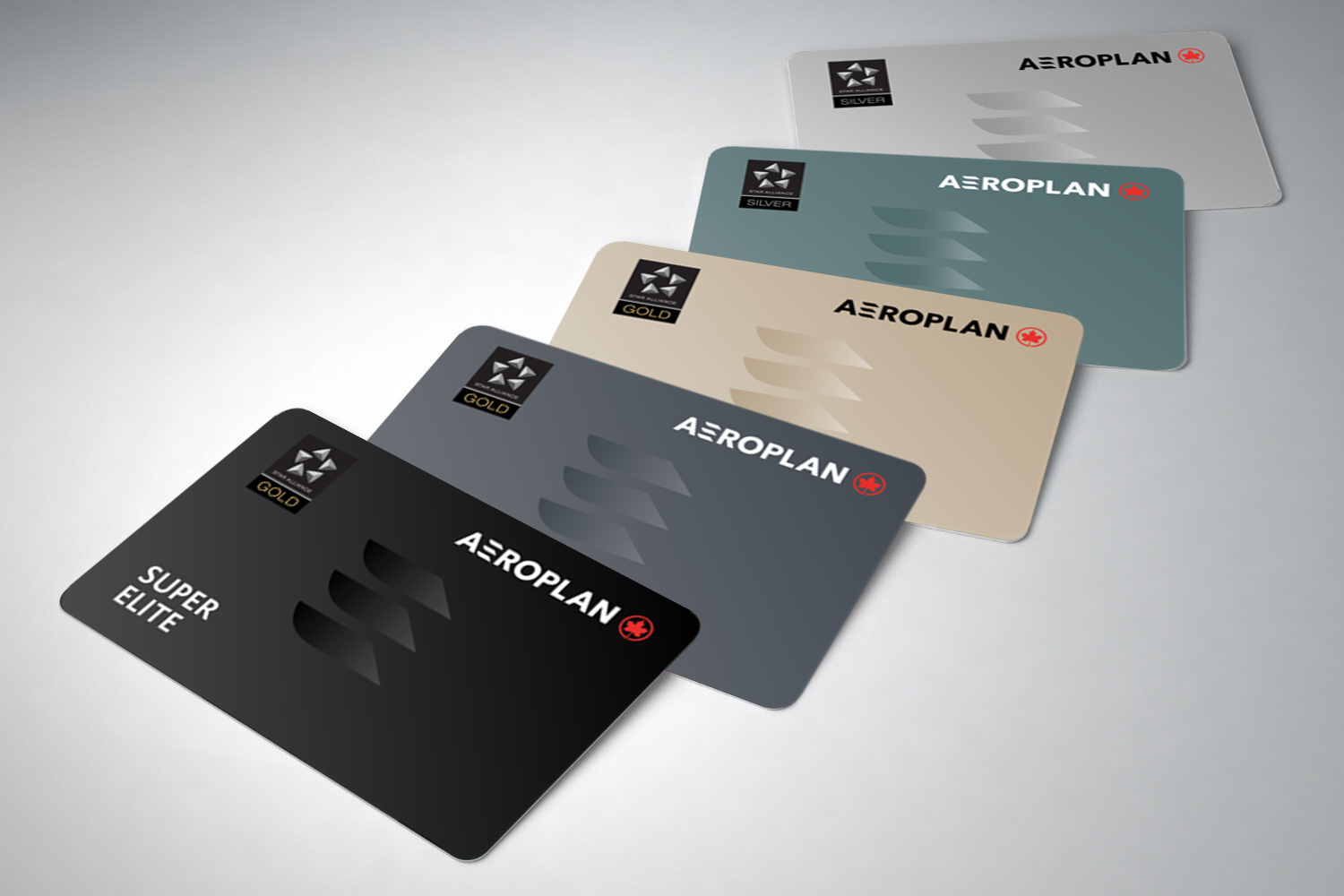

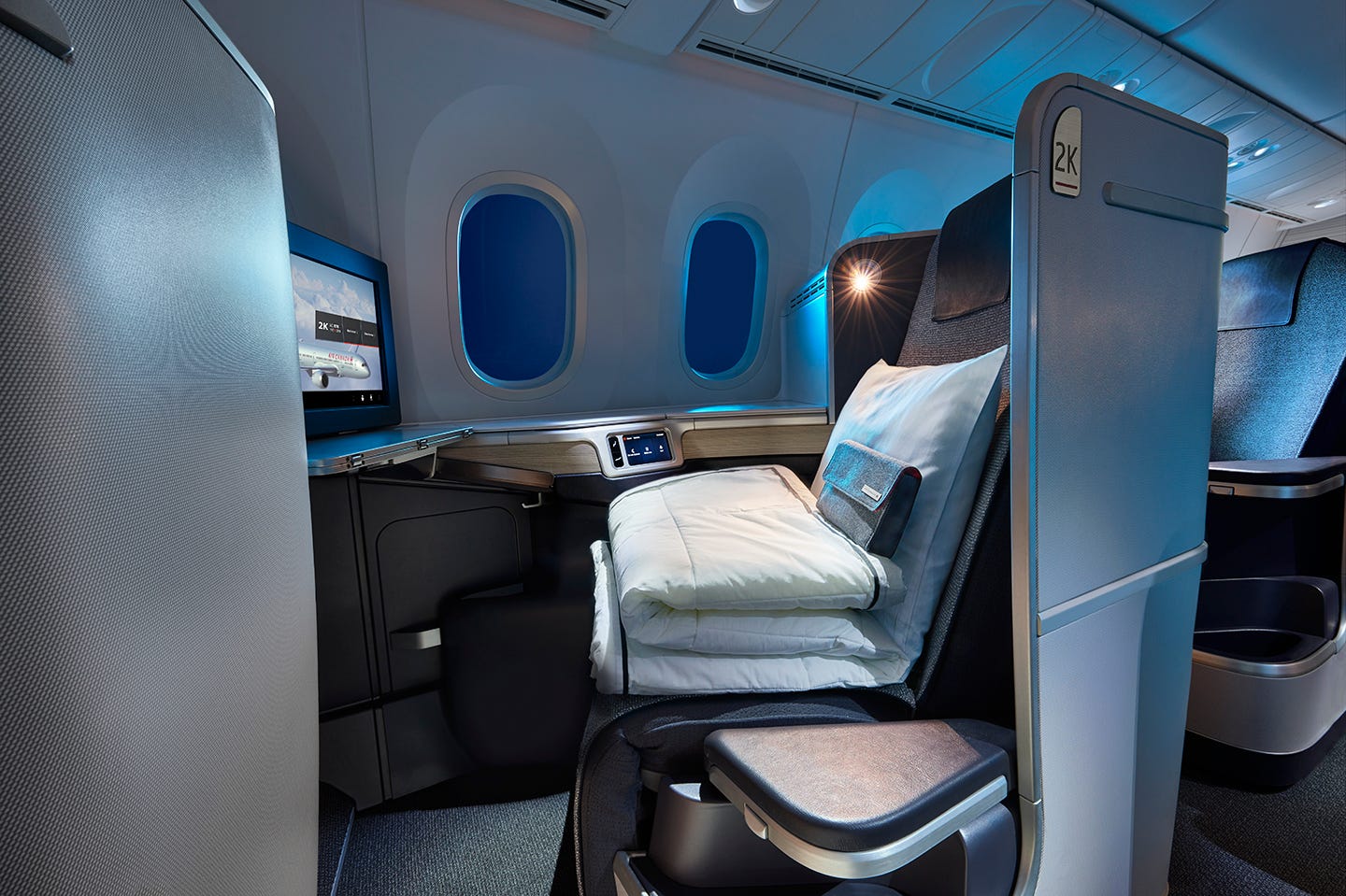
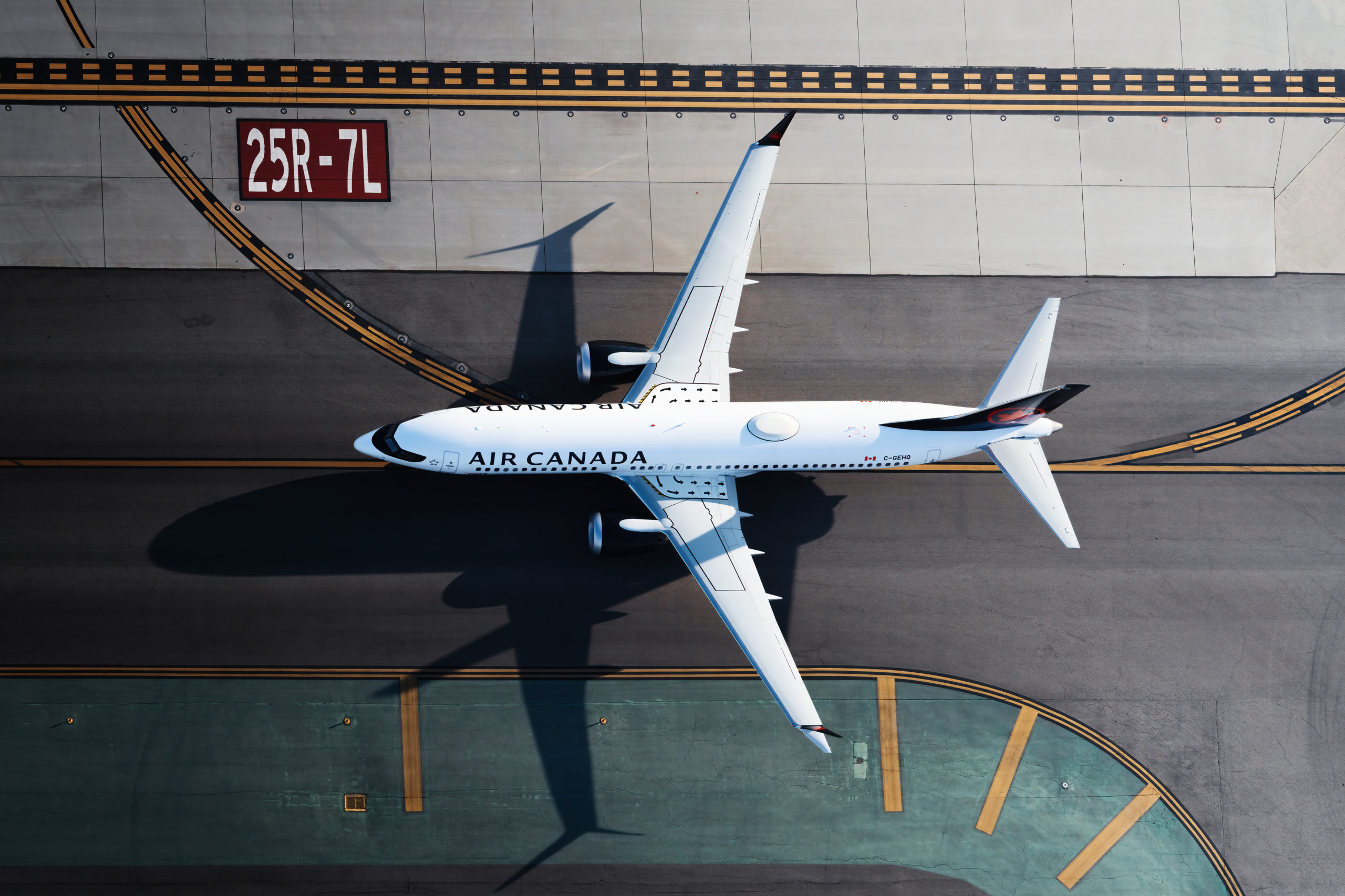
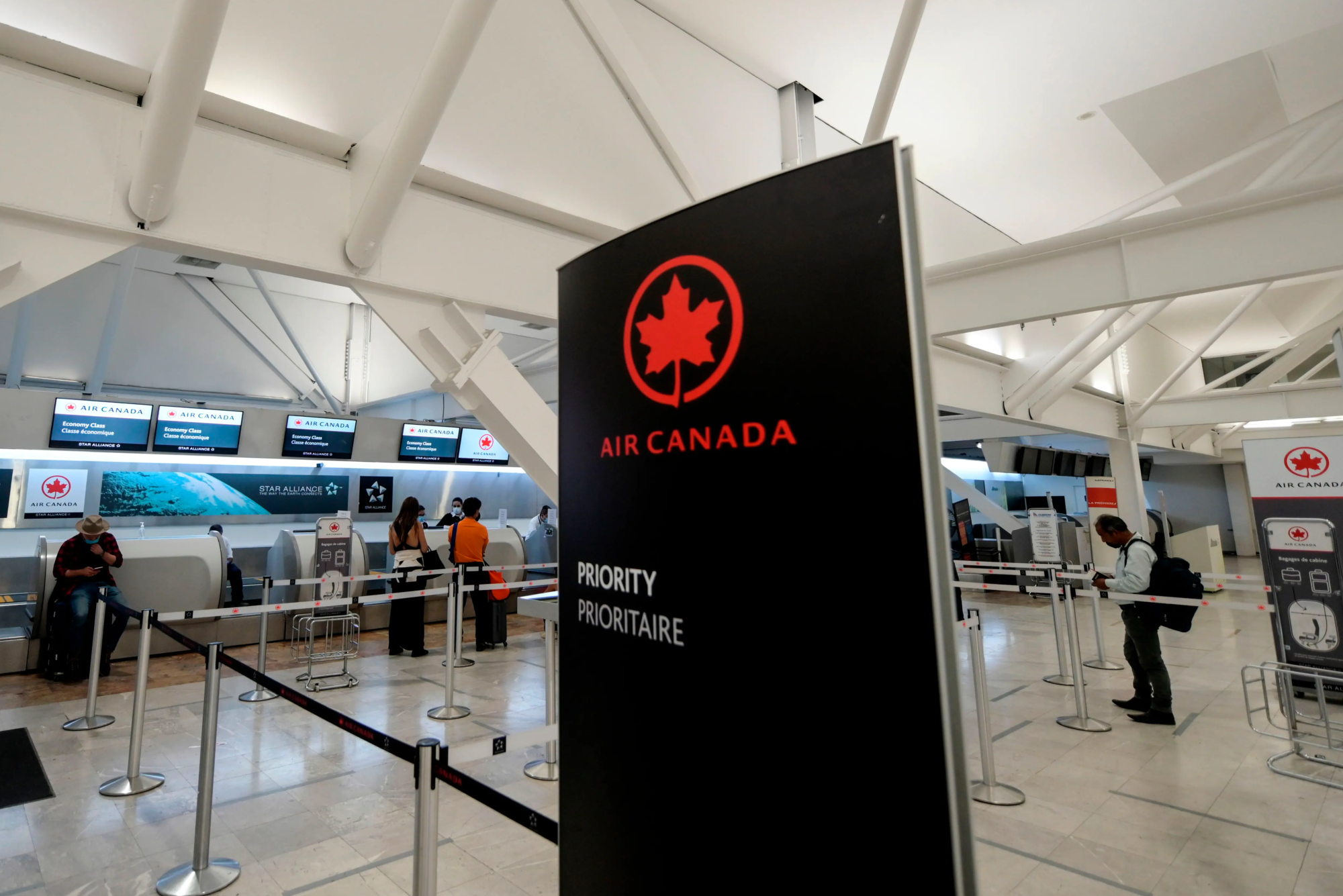
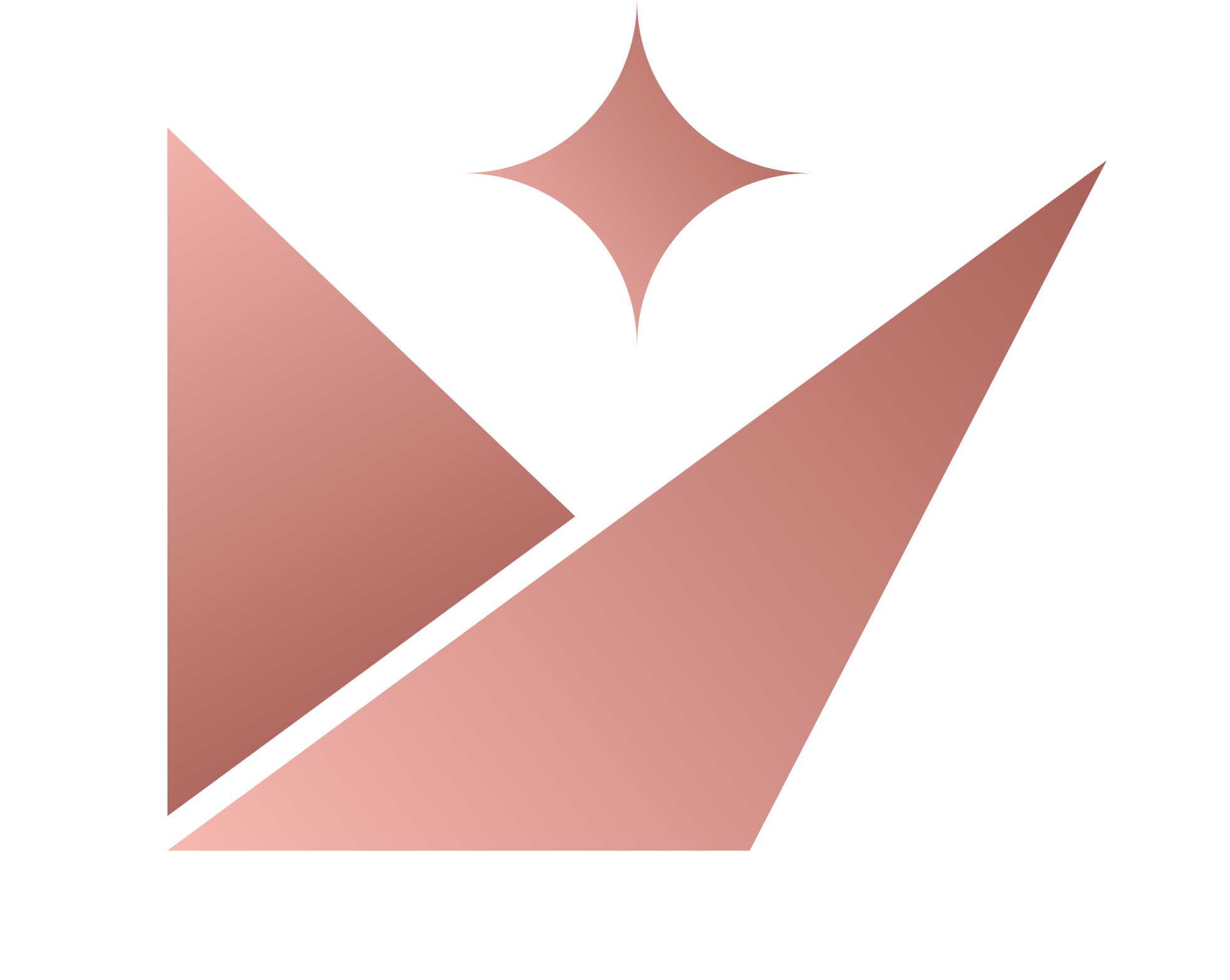
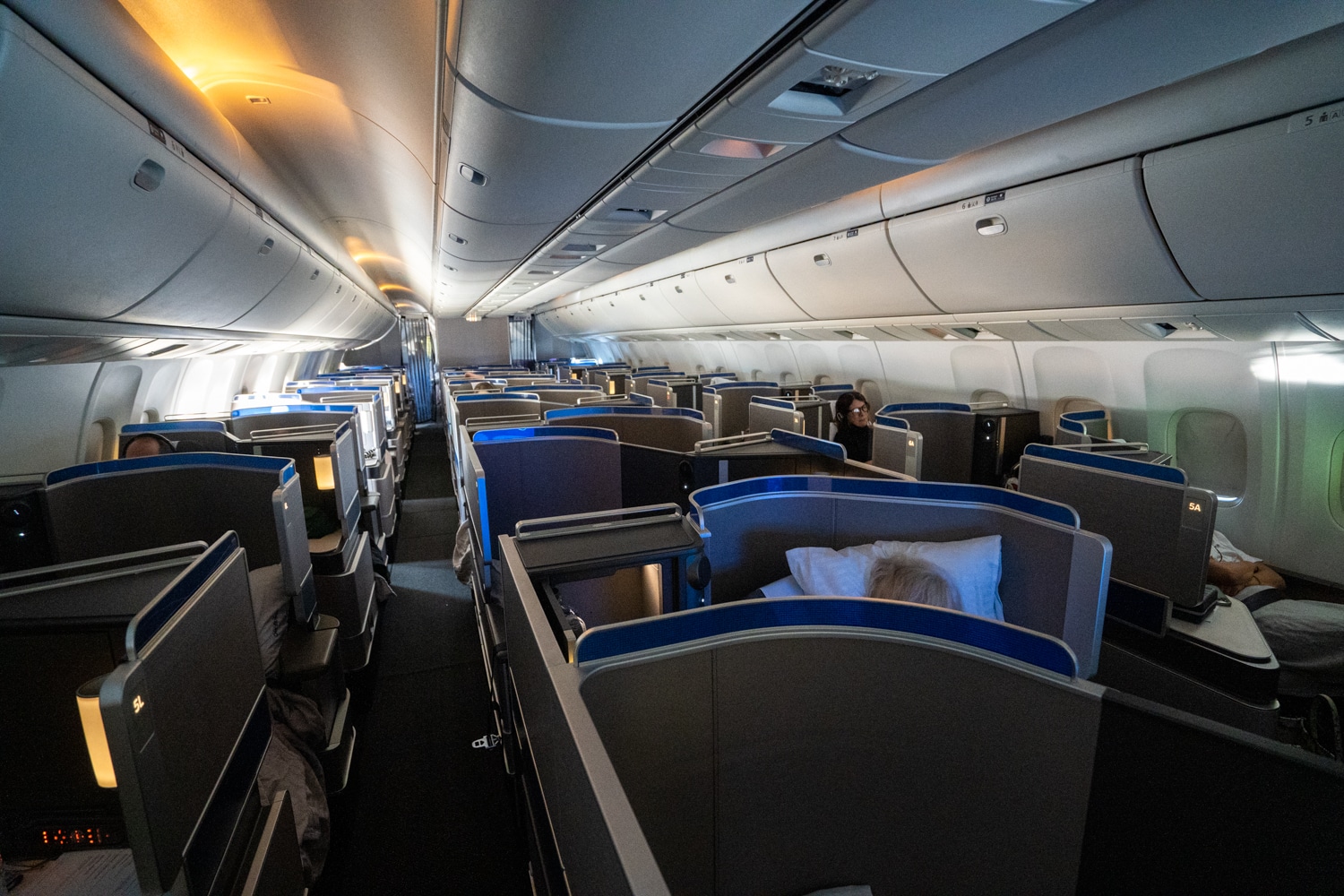
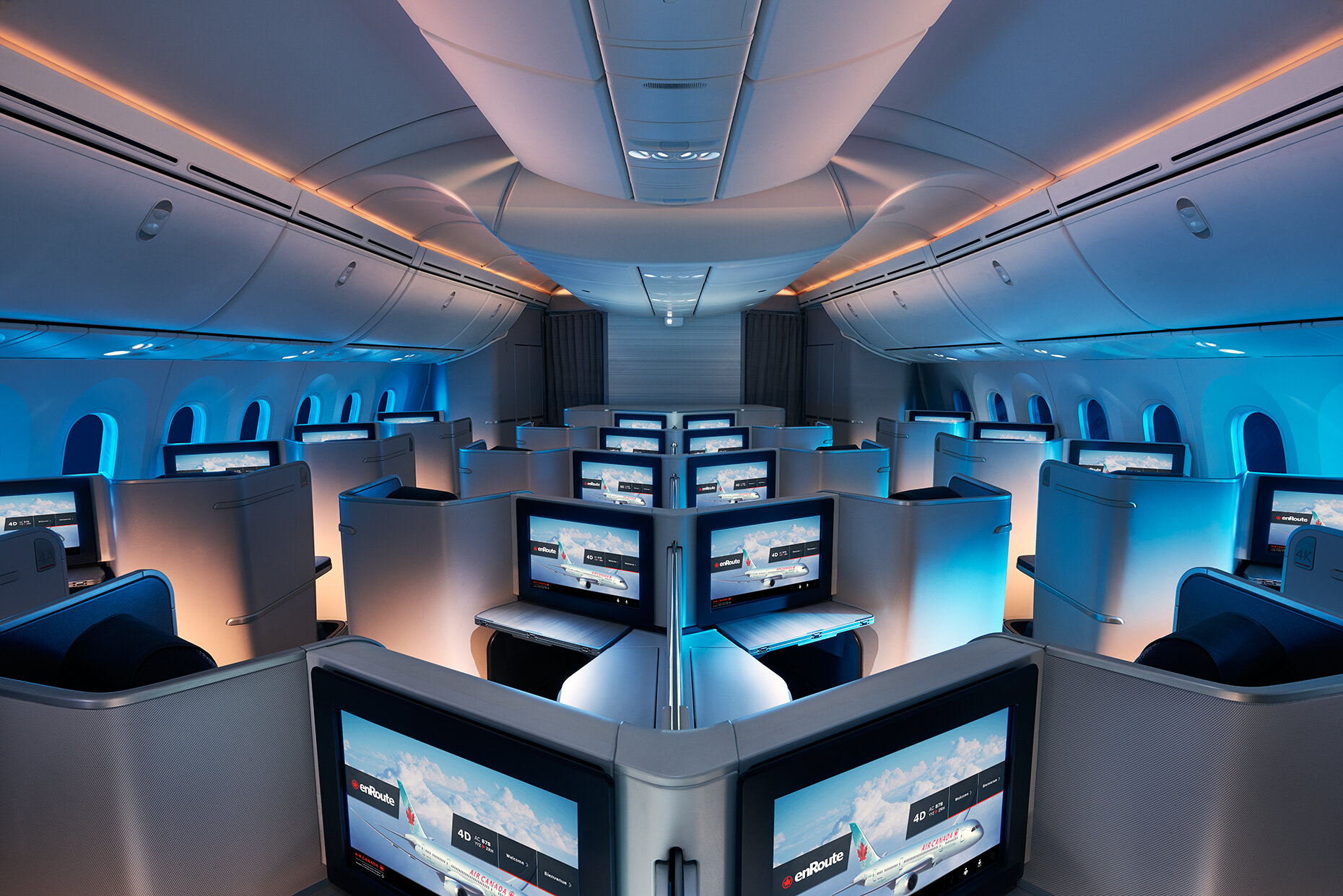

Thanks for this very useful info!
Question about “No matter where in Canada you originate from, the “8,001–11,000 miles” distance band on the “Between North America and Pacific zones” chart is a very interesting sweet spot, because it lets you fly a relatively very long distance for only 87,500 Aeroplan points in business class”
Was this supposed to be “7,501-11,000 miles” and not “8,001-11,000 miles”?
Thanks,
Ran
Thanks for noticing – fixed!
Thanks for this guide! Super helpful.
A couple questions:
1. Is the linked aeroplan reward chart in this article outdated?
Currently linked
https://www.aircanada.com/content/dam/aircanada/loyalty-content/documents/flight-rewards-chart-en.pdf
Found on Google Search
https://www.aircanada.com/content/dam/aircanada/loyalty-content/documents/flight-rewards-chart-en.pdf
2. In the guide where it says – “No matter where in Canada you originate from, the “8,001–11,000 miles” distance band on the “Between North America and Pacific zones” chart is a very interesting sweet spot, because it lets you fly a relatively very long distance for only 87,500 Aeroplan points in business class ”
Did this statement mean to say “7,501 – 11,000″…..?
I don’t want to make assumptions that I’m following the guide correctly so I’d rather ask to be sure.
Thanks for all your help!
You are correct. Thanks! It has now been fixed.
When I log into Aeroplan to book a flight (long-haul YYZ to CPT) the “top” class allowed to book is Business Class. I don’t see anyway to book First Class. Since the flight I was looking at is operated by a partner airline I wanted to know the difference between the Business Class and First Class.
Is there a way to book First Class using points?
FYI – I’m assuming booking “Business Class” with a partner airline is still Business Class and not First Class.
Assistance would be appreciated.
Which airlines are you looking at? Not all airlines have first class, and not all routes have first class. So it depends. Yes, Aeroplan can book first class when available. Also to point out, first class in this context means international first class, think of it as a private suite. While US-domestic first class are just a fancier and roomier “coach” seat at the front of the plane.
I’m in Canada. My understanding is the only way to book using Aeroplan points is via their website or to call. On their website I wasn’t selecting a specific airline, just the route and date. The list came up with some options for their partners (as usual). This included Lufthansa and Emirates.
However, the highest fare option on the website is Business Class. I didn’t see First Class and I was curious to know what would be the point difference.
Advice on how to do this would be appreciated.
Hi ML, I suggest you start with Prince of Travel’s guide to Aeroplan: https://princeoftravel.com/points-programs/
Most airlines do no offer first class to/from Canada, and even fewer are bookable directly with points. For example, between YYZ and CPT as you mentioned, the only airline which would likely fly first class between this city pair with one-stop would be Emirates. Emirates is bookable with Aeroplan, however not all seats are made available to partners. Here is our guide to booking Emirates first class: https://princeoftravel.com/airlines/emirates-first-class/
I did start with the guide to Aeroplan. In fact on the main page it states best way to redemm “Business class and First Class on Star Alliance airlines. The reward charts for North America and Atlantic zones and North America and Pacific zones shows both Business and First Class.
However, I don’t see a way to check out First Class for points (unless I call) as the Aeroplan website only shows up to Business Class.
In the link that you posted for Emirates it also says First Class can be booked with Aeroplan. Sadly, I’m missing the “how”.
Do I assume that I have to phone since I don’t see anything on Aeroplan site?
Hi ML. Sorry for the confusion. First class will show up online when you search if and only if there is first class available. There are not very many airlines or routes with true first class products, so they will not show up very frequently. For most airlines, business class is the top product available (and for long haul, will still provide the full lie flat seat experience). However, there are some first class examples: Here’s MUC-IAD tomorrow or YYZ-DEL next spring as examples.
Hi there. I just checked your suggestions and I see it now. Good to know. Thanks for the help.
I just finished looking at flights from YYZ to LHR in mid-Oct. Admittedly it’s not that far away but the redemption rate across all classes of service averaged around 1.3c/point with only minor variation between classes. An astonishingly low value. And 818,000 points to get to LHR in Business Class is offensive.
At these rates you may as well get a cash back card. Plenty out there that will give you > 1.5% and you don’t have to worry about which airline you are tied to. I get there are perhaps other ways to earn bonus Aeroplan miles, but I don’t think it’s worth the effort these days. Am I missing something?
Try looking for flights via Montreal and major US hubs instead of direct flights. You should be able to find plenty of flights in business class for 60,000–70,000 Aeroplan points.
Schedule Change
I have a multi city all partner award itinerary booked in 2024 and one segment has a flight time change departing and arriving 1 hour earlier than the original time.
Does this entitle me to a no fee change and can I change Any segments to AC metal without paying any extra points or taxes/fees?
I am quite positive with those segments that are directly affected, such as those flights immediately prior and after the affected flight. However, I’m not 100% sure about those that are days away from your affected flight. I would say I am 90% positive.
Hi! I’m a long time aeroplan member and have booked business flights for years at good rates. Since the new program I find everything to be terrible. You mention in this article that a sweet spot is flying Calgary to Auckland for 75k Mike’s in business. When I search that route on air Canada all the options are 400-498,000 points per person, one way! This is a huge discrepancy. An I searching imcorrectly? Also I haven’t ever see any partner airlines in search results, how do I see options other than air Canada?? Thanks for any tips or updates!
I’ve been playing around with my VPN and have just noticed that you might get different flights presented depending on geography when redeeming with Aeroplan. Has anyone else noticed this?
Redeeming BKK – SIN
VPN in Canada: Various Thai Airways flights + Others 8K pts + 67 CAD
No VPN: Only Singapore Airlines, 1 flight 8K pts + 90CAD
NVM – it seems to have been a search glitch.
Weird question – I use to redeem RBC Avion points for Air Canada flights and still get SQM/SQS credit for the duration and segment. is this normal? I had an agent told me today that i should not get credit for non paid flights at all.
The “new” Aeroplan redemption rates are a complete absolute RIP OFF.
I have been a member and Elite member for maybe 20 years and knew the points system very well.
Now that AC took over Aeroplan they have absolutely screwed loyal regular customers.
For example: An open-jaw flight to asia (all business) was on average around 150,000 points. Now I cannot even find a ONE-WAY flight for that redemption level.
Beware; they are selling business class tickets which have only one leg (usually a short domestic one) in Business.
New to this site, BUT….could not agree more. Back in the day, SE meant something when it came to reward redemption. Now with dynamic pricing good luck in getting a reward ticket at a “reasonable” price.
Hi Ricky, thanks for this. I am Elite Gold with KrisFlyer (SQ) and after recently moving back to Vancouver will be travelling from YVR to LHR regularly for work (1/month). Is it best for me to use my KrisFlyer account or my Air Canada account when booking flights on AC? I have over 1M Krisflyer miles and wondering how I can use them to upgrade from a purchased economy flight to either premium or business. Appreciate your time! Nick
Not sure if the answer is posted somewhere, but let’s say you open an Aeroplan Visa Card at both TD and CIBC, and you spend the qualifying dollars for the welcome bonus, can you get both welcome bonuses on the same Aeroplan Account?
Thanks!
Yes!
This has probably been covered in the year since Aeroplan relaunched, but having a real hard time reconciling how AC does the dynamic pricing here… example:
Picked a random date, Sep 16, 2022 in this case: YYZ-IAD-AUH with the latter leg in First Class on Etihad – they want 170.2k when the partner award alone should be 120k. So ~50k premium for the 83 minute AC flight to IAD.
But if you search that flight separately, it’s only 22.5k in business class (within the range for that flight, but not the low end of 15k).
Why oh why does it work like this???
My other beef is when I’m looking up flights the day they first hit the calendar, let’s say YYZ-GRU on Nov 5, 2022, the latest available date… and they’re already asking 130.4k for what should be a 60k award. Do they not release any seats as “saver” seats or whatever they’re called at the low end? Do they do that later, perhaps? Do we have any insight into this practice yet?
I know you’ve written about the dynamic pricing before (e.g. https://princeoftravel.com/blog/new-aeroplan-a-closer-look-at-dynamic-and-preferred-pricing/) but I wonder if we have enough data points yet to breakdown how or when we could expect to pay the lower end for AC flights. Some sort of update to this or a separate strategy article? (Especially for those of us without status or eUps) Or maybe I’m just too optimistic / stubborn to pay more than the minimum. Shrug.
Would also love an follow up interview with the AC/Aeroplan reps that were in some of your previous videos, perhaps to provide more insight.
Anyways… Thanks to all of PoT for all the great articles, guides and videos, been a huge help over the last couple months as I have been diving head first into this game.
Hi Ricky, I have been trying to locate this answer and can’t find it so thought I would ask you…I know you know. When flying on aeroplan points do you still earn aeroplan points/mileage? The old program….yes…..the new program…not sure… I have just done 3 flight segments by points across the country in August and have not received any points for flying in business in aeroplan points. Also noticed my lifetime balance is really low…. do point bookings accumulate points for LQMs?
Thanks for any input. Always read and love all of your information. Cheers, dani
Neither the old nor the new program will give you miles/points on a reward flight
I find the program extremely difficult to redeem now. We’ve redeemed for several business to MLE and SYD in the past (with stops in BKK/SIN), but now it’s like 3X the cost (150K to 500k). Really not enjoying the updates….
Hi
When I try multi city with points it only shows two rows for two flights and does not show “Add another flight” option what you see multi city with $.
Do we need to call Aeroplan for additional flights?
Hi Ricky and team – your blogs and articles have been very helpful to learn the ropes of the new Aeroplan program. We had booked a mini around the world under the old program and set to travel Apr 2020 but Covid had put a stop to all of our plans. We are trying to recreate our plans again for 2022, but I’m noticing that the redemption is just not the same. We just looked up a straight forward YYZ to HKG round trip on Business Class and it only gave us the option of using 366K points plus $4.8K in cash payment. In the details, we had to pay the base fare in points AND cash which doesn’t make this seem like a good deal at all. In the previous program, we were able to book these flights primarily on points and some extra fees (but not $4K)! Do you know why that might be the case?
Hi Ricky,
do you know when the charts for upgrades with aeroplan points has come out with partner airlines? For example, I buy economy with EVA but want to upgrade to business with aeroplan points.
Hi, great article , question: does domestic flight allow stopover ? say YVR – > YHZ -> YYT -> YVR , aircanada website doesn’t allow redemption for more than 2 segments ? do I have to call to book (with fee) ? thanks
Thank you for an excellent description of the new program – much better than the official one. How useful the new program is in practice remains to be seen, however. With the old program I have travelled regularly in business class just by planning well in advance. I am currently booking almost a year in advance for a trip to Europe. Flights that would have cost 55,000 (pp one way) on the old program are now listed at 200,000 points, that is 800,000 points round trip for two. This is not only many times the old price but exceeds aeroplan’s own reward chart. Good luck.
Old aeroplan had some nasty fees.. do you know if it’s the same with the new program?
Sounds like you have a fair bit of catching up (reading) to do. 🙂
Ricky
I have 25k elite status based on spend. Why is it I have to get 35k qualifying miles to get 35 k status rather then 10k on top of my 25k status.
Thanks
How do you tell what cabin your seat is in when it displays only 74% in business class?
Expand the search result and it should show you more details about which flights are in business and which are in economy. Click on the Flight Details on the left-hand side and you should be able to see it too.